|
Forum: Pentax K-1 & K-1 II
01-15-2018, 10:38 PM
|
| |
Yeah, the Nikon was being over exposed.
He should have used a light meter and actually measured the light accurately to make sure he had the correct exposure settings, for a proper comparison. It could very well be that the Sony and Pentax was actually underexposing the shot for the settings used.
What made me think of this is the following review:
Camera Comparison: Nikon D850 vs Sony A7rIII - YouTube
Turns out the Sony sensor ISO's are not really rated correctly as you step up in the ISOs.
|
|
Forum: Pentax K-1 & K-1 II
11-16-2017, 12:57 AM
|
| |
Clackers I calculated the f8 from measuring your low res picture, which effectively increases the CoC. And f-stop values by themselves do not provide information about DOF. On a full resolution picture at 200mm f/4 at 10 meters distance, using the K-1, the DOF is 0.56 meters. I don't know how far the person was from the camera, I guessed based on the height of the person relative to the frame (using a low res picture without exif data). But if the image was cropped that could change the distance. But a DOF of 0.56 meters can be enough to cover someone's face, if you then reduce the resolution of the image by half, you can effectively double the perceived DOF. The more you reduce the resolution the greater the perceived DOF.
But: You again show us a single success shot, at low resolution. It would be a lot more helpful to see a sequence of shots from a target moving erratically towards the camera, in full resolution (preferably Raw pictures, the exif data reveals a lot).
It would also be great to see a very small DOF, relative to the subject, since we need to determine where the focus lands. Even better would be 100 or so shots composed of sequences; then we can actually calculate success rate. This is how you would asses the capability of any focus system. You could do this for 3D tracking, with or without movement in the direction of the camera. Or spot focus tracking and compare the results from the different methods. Or even smooth motion towards the camera, etc. You just need to define what your subject was doing, that is why sequence shots are great. Combine that with a small DOF and you can see what the camera is doing with the focus system.
Here is an example of what I mean (click on the image to get full res pictures):
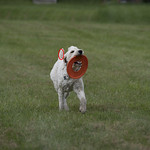 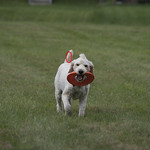 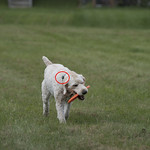 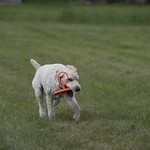  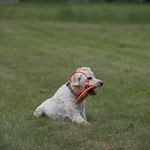
The red circles indicate where the focus is. With the sequence of shots we can see the dog is moving in the first 2 shots and starts to stop and settle down in shots 3 and 4. And then lays down in 5 and 6. These shots were the result of bad settings on the camera causing a shutter release delay, which effectively caused the focus system to lag behind. To know this you need a small DOF and a sequence of shots.
Just as an example: If we were measuring success of the focus tracking of the K-1 in this scenario we need to disregard shots 4 through 6 since the dog isn't moving and we are interested in tracking. In shot 4 it looks like the dog is still running but it really is starting to lay down. If we increased our DOF (either by reducing the resolution or manipulating one of the 3 other variables that affect DOF) we could easily get the dog's face in focus. This would make determining where the focus lands difficult.
But more importantly: Why not answer the question posed by the OP? I will state it again:
Let's try to address how the OP can get this shot. We know that the DOF is small enough that it doesn't cover the whole subject. Let's keep this a restriction, small DOF. The subject is running towards the camera, and the subject is kids, so most likely running erratic. What are your solutions, what settings do you use, and what technique? Then show us the results with full res sequences that demonstrate this.
|
|
Forum: Pentax K-1 & K-1 II
11-15-2017, 10:44 PM
|
| |
As I have mentioned before, 3D tracking isn't always going to be a great solution. The player in the first series has very dark colors on and you are asking the system to track them. Even DPReview says that there is a lot working against the system. Shots like that at night on a subject that has dark clothes on, yet they still land good in focus shots. To do the same manually would require making sure you have a focus sensor on one of the few contrasting lines on the dark clothes.
My suggestion wasn't that everyone needs to go get a D500 or D5. My suggestion was that if you plan on doing a lot of action shots, you might get a lot more out of a camera that has a better focusing system. That includes a better 3D tracking system. It gives you options, sure you might not always want to use 3D tracking. But on erratic targets, it can help a lot!
This is DPReviews full writeup on the 3D tracking. I will let the Review speak for itself and others can decide.:
Comparing the Nikon D3000 with 3D tracking with the K-1 center spot focus, I found their success rate to be about the same. My conditions for the test was an erratic subject moving towards the camera with small DOF. Maybe I am wrong with my success rate calculation, but professional reviewers all comment on the "not-a-sports-camera" autofocus of the K-1's autofocus (even with a Pentax rep present, this point is not disputed). They say this not because you couldn't get action shots, with a K-1, but that other brands have better auto focus results. Maybe I should do an even larger pool of shots, with both cameras, to get more accurate rates. But that is what it would require, useful data, and lots of it. I looked for picture sequences that you posted, with small enough DOF that was visible in the picture (low res). With the one sequence I found (low res pictures), it appears that you might only be getting a 50% accuracy (without exif data it is hard to say if it was motion blur or actual auto focus). The Nikon D3000 is an old camera: I really think a D810 or even a D750 would out perform the Nikon D3000's auto-focus system.
|
|
Forum: Pentax K-1 & K-1 II
11-14-2017, 02:29 PM
|
| |
I see a system doing exactly what it is suppose to do. The little red squares are representations of the sensor that is being used. They NEVER lign up exactly to where the actual sensor is! It is suppose to be jumping around, attempting to stay on the same area as before. To me it appears as if the 3D tracking is attempting to keep the bottom white line of the sweater in focus.
Attachment 377088
As the person is moving towards the camera the sweater line is dropping lower and lower in the frame. The camera selects different sensors surrounding the line, while it considers where the system expects the target will be as well as where the most contrasting lines will be.
Here is an example where the camera is switching from one sensor to the next. Look at the gap in the sensor indicator space:
Attachment 377089
These sensors look something like this (This is a 16 sensor unit):
Attachment 377090
The D750 in the video is a 51 sensor group and they are often lined up like this:
Attachment 377091
So, even though the display shows you a massive jump, the sensors often are right next to each other. To actually know where the sensor is, you need to measure it. So the crazy jumping is actually what you should expect as the subject moves across the frame.
In the Nikon D500 there are a 153 focus points. 55 are selectable. When you get an indication that a specific sensor is being used in the D500, it might actually be the one of the surrounding supporting sensors that are used. The squares are what you see when they indicate which sensor is used, but the dots are where the other sensors are. So just following the visual aid square is not an accurate way of knowing what the camera is actually tracking.
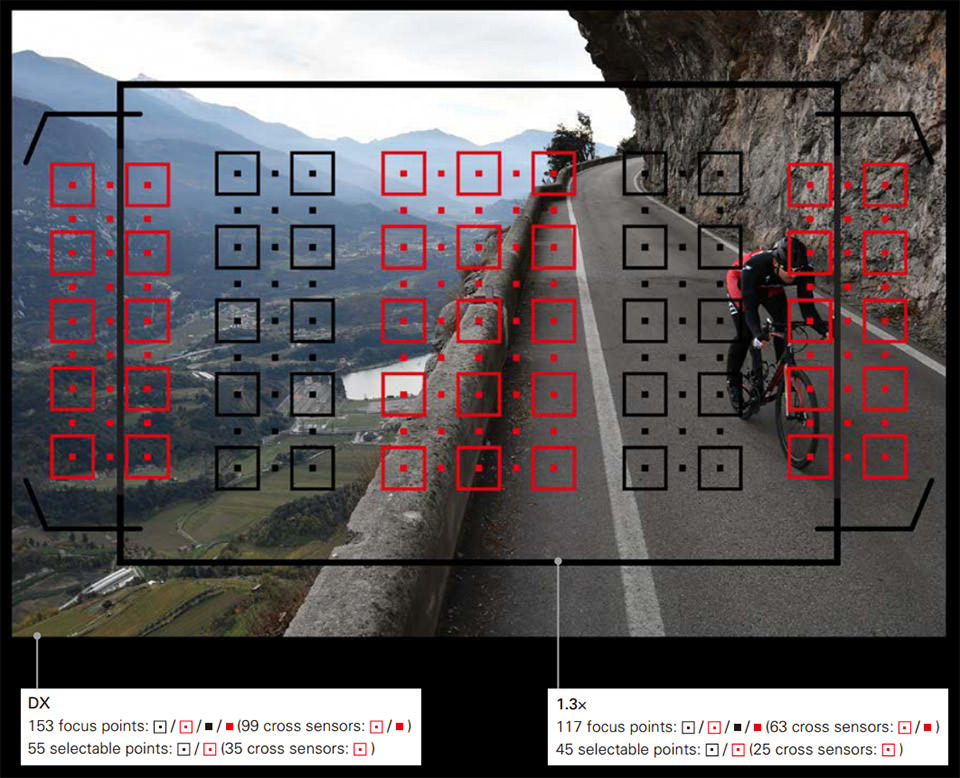
Keep in mind that the tracking is done by the metering sensor. These sensors range from 2000 pixels up to 180k pixels. This sensor is used to establish the contrasting lines that will be tracked and selects the phase detection sensor that best fits this location.
On my Nikon D3000 it looks horrible when it is tracking a subject. The red squares are jumping all over the place, yet I get 41% retention rate with a depth of field ranging from 0.4 meters to 0.08 meters on a dog running towards me.
Knowing this, you can look at the video again and see that the squares are always around that bottom white line of the sweater. What might be more interesting is to hear from you what you thought it should look like?
---------- Post added 11-14-17 at 03:22 PM ----------
Supports exactly what I said in my post:
With taking pictures of bowlers in cricket, you can easily increase the DOF, setup your focus for where your subject is going to be (with bowlers in cricket this is easy since you have at least 60 bowls per bowler and they try to bowl as close to the line) and then take your pictures. This picture is a great example of what I suggested: Know your subject, increase your DOF to include the interesting environment. Of course the lower resolution picture doesn't allow us to really examine where the focus is.
Clackers, you are in the prime situation to provide us with additional information. You have two camera system that can now be compared with each other. What would be helpful is to setup a more controlled situation. Why not try this: Setup a very small DOF configuration, relative to your subject, with an erratic target, in the Z-Axis. Take a 100 shots with each camera, upload the raw files (the whole set, including bad and good ones) and let us examine what the retention rate is? Additionally try another 100 shots with the Sony A7's tracking turned on. This would be helpful information. Because if you get a retention rate of 60% with the Pentax and then a 40% retention rate with the Sony, then we know that with how you use the camera the Pentax is a better solution. (I am skeptical of mirror-less cameras being the best auto-focus systems out there, because phase detection is a proven technology).
Why is this important? Well the Original Poster had this scenario:
Let's try to address how the OP can get this shot. We know that the DOF is small enough that it doesn't cover the whole subject. Let's keep this a restriction, small DOF. The subject is running towards the camera, and the subject is kids, so most likely running erratic. What are your solutions?
It isn't good enough to show low res pictures of how you did this (your success stories). What are the settings? Show us small-DOF full-res picture sequences where you were able to do this?
I can also show my success stories. Look at these: Flickr Album.
Here is one of my best (BTW, you can click on the image and get the full res image and see how tight the DOF is! Be sure to zoom in to a 100%):

Look at how small the DOF is! But I am honest and can tell you that it took a lot of shots to get one of these with the Pentax K-1.
Here is the Nikon D3000 picture. With tracking on the Nikon D3000 on (which is horrible), I got this within 27 shots:

It isn't an interesting shot, but having that ability in your toolbox is great for when it might be interesting, such as a kid's facial expression, while they are running!
|
|
Forum: Pentax K-1 & K-1 II
11-13-2017, 11:50 AM
|
| |
I think they are referring to the latency between auto-focus acquisition and shutter release. It is a problem with the K-1 (maybe other Pentax) cameras that don't have the correct settings.
These settings mostly resolves that issue:
Menu 1
--Phase Detection AF
----AF Mode: AF.C
----AF Active Area: SEL
----AF.S Setting: Focus Priority
----1st Frame Action in AF.C: Focus-priority
----Action in AF.C Cont.: Focus-priority
----Hold AF Status: Off
Menu 2
--Crop: FF
--Image Capture Settings
----File Format: RAW
----JPEG Recorded Pixels: XS
----JPEG Quality: 1-star
----RAW File Format: PEF
----Color Space: AdobeRGB
--Dynamic Range Settings: All Off
--Noise Recution: All Off
Just setup one of your User modes for action shots with these settings. As mentioned earlier, I didn't proceed to test DNG file types so I don't know if they latency returns with those file types.
It is better to completely skip the concept of getting into what the focal length was. It is simpler just to refer to the Depth of Field (DOF) size, since that is what matters with perceiving what is in focus. It effectively gets to the same concept you have. Increasing your DOF will hide any flaws of the autofocus system. With the "Autofocus system" I include the ability of the lens into the system. The response speed of the lens can make a big difference!
The factors that determine the size of your DOF is the Focal-Length, f-stop, Pixel Pitch, and distance of your subject. I will list the effects one by one for those that don't know:
Pixel Pitch: the larger the pixel pitch the larger your DOF will appear to be.
f-stop: The larger your aperture (Small F-Stop values) the smaller your DOF will be.
Focal-Length: The larger your focal length the smaller your DOF.
Distance of your subject: The further away your subject, the larger your DOF will be.
So you can play with any of these 4 factors to manipulate your DOF. The smaller your DOF the more precise your focus of your camera needs to be and the more important the accuracy of your focus ring will have to be. Less throw in your focus ring and your system will have to be that much more precise to be in focus.
This is a great way to improve your own technique! I agree! But at some point we do have to be honest, which you were! I just like to express that honesty with hard numbers. My procedure was to measure the area of the center spot focus sensor. Next, I went and shot several action shot sequences (~100 shots per test run) in great conditions, with an extremely small DOF. Then I analyzed how many of the shots had the center spot area in focus. My numbers turned out to be 41% at max. Next I had conditions where the situation was worse (less contrast on the subject) and the number fell to 10%. In total my tests had 2000 shots. For some people these numbers mean nothing and does nothing for them. But such information allows me to plan and develop better techniques for my self. I know when it is a low contrast subject (such as a subject in a wooded area), I need to pre-prefocus on where my subject will be, and take the shot as they get to that spot. Or plan to know my subject and take a shot when they have the smallest speed in my direction. In good light conditions I can increase my DOF and get more in focus shots that way.
One additional note, most action shots where the subject is moving towards the camera, can become extremely boring real quick. Action shots usually means something when the subject interacts with what ever the action is (such as the environment), unless there is something interesting about the subject alone. So getting more in focus (larger DOF) will usually make the shot more interesting. But in the rare occasion where the subject's face reveals their struggle, and you want to isolate that (small DOF), those percentages I listed above will become important. Depending on the light conditions you might have to take 10 shots for the focus to land where you would like it to be.
Being able to reduce the size of the DOF has benefits in another way. Sometimes we do have low light conditions with a moving subject. If you plan to freeze your subject you might need a high shutter speed. With the combinations available between ISO, shutter speed and f-stop, it is great to have the option available to open the aperture to keep the ISO lower and the shutter speed high. Yet again it comes back to options, or tools in your toolbox. Understanding the numbers listed above can help you yet again, in planning. If you are going to be in these situations often, then look for an camera that accel at action.
One tip, if you don't need large resolution files you can "expand" the size of your DOF by reducing the resolution of your image. Reducing the size of your image will effectively increase the circle of confusion.
P.S.
My tests had the following setup, if you want to have a reference for the DOF. I was using the Pentax 70-200 lens with the f-stop at 2.8 and the Pentax K-1 camera. The subject was between 15 and 5 meters for my tests. That is a 0.9 meter DOF at 15 meters and a 0.098 meter DOF at 5 meters. (Out of the 2000 shots I had, finding the usable settings, I had about 500 shots with the good settings. Out of those shots I got these https://www.flickr.com/gp/153388317@N08/A5w17a. You can look at the EXIF data and pixel peep large versions.)
With the Nikon D3000 I was using a 300mm lens at f/4. At 15 meters the DOF was 0.371 meter and at 7 meters it was 0.079 meter. (On a 27 shot test with 3D tracking I got a 41% accuracy. One of the shots was this one: https://www.flickr.com/gp/153388317@N08/87Mi22)
If anyone is interested in how to measure your center spot phase detection sensor and create a photoshop action to show it on your picture, let me know; since I can make a video of how to do this. I am prepare to do this if there is interest. You can get this kind of layer, that you can turn on and off, on your picture to see where the sensor was https://www.flickr.com/gp/153388317@N08/5mx5bg. If you look at the original size (click the download icon and select view all sizes and select Original) you can see that the grass was selected as the focus and not the dog. This allows you to learn how the focus system works. What I learned from this is; that if I wanted the dog in focus, I should have placed a focus spot on the grass next to him, since the grass offered good contrasting lines.
Then again, most of my shots are not action shots:
https://www.flickr.com/gp/153388317@N08/UnJ037
https://www.flickr.com/gp/153388317@N08/jae51G
https://www.flickr.com/gp/153388317@N08/qY91W8 |
|
Forum: Pentax K-1 & K-1 II
11-13-2017, 03:46 AM
|
| |
Great! This doesn't mean everyone can do this, that is why he is *the* action photographer. AND how many takes could he have? How much planning went into deciding where the skateboarder was going to be. Did he practice his focus ranges and establish his focus limits. How much experience does he have taking these kinds of shots? Such shoots become the very definition of non-erratic, because he knows his subject, his gear, and that makes him a pro.
Out of the 229 shots shown, there were 37 miss placed tracking shots, that I counted. That is an 83% accuracy for tracking. In some of the sequences it appears as if the target was never established to begin with. For example: the sequence started at frame 60, the dog was never picked as the target, but I included that in the sequence count. Some of the targets that were in front of the dog (on the grass) was actually on the dog, because the displayed bracket on the camera is not necessarily where the actual sensor is. Look at frame 20 and 21, the dog is in focus, but the sensor bracket is on the grass just in front of the dog.
At frame 200 the system completely looses the target, and through frame 208 still doesn't re-establish focus. The lens has focused to the distance and cannot find the target. This is a known issue with any 3D tracking. If your lens isn't close enough in the focus distance of the target; then it will keep searching for the target in the current focus distance. Even with these flaws the dog was selected at 83% of the times, including the sequences when the dog was never picked as the target.
I by no means think that Nikon 3D Tracking is the solution to everything. A good example is dogs. Their features don't lend well to tracking specific body parts. Their nose, eyes and ears or features on their coat can all be taken as the same object, If you wanted the eyes in focus, you might have to go to spot focus for small DOF. Or in the case of birds in the sky where dynamic group focus allows you to use the featureless blue sky to pickup birds for focus. But in the case of a dog having a white coat and dark eyes, you could then use a good 3D tracking system for body parts. It comes down to options. It isn't something to use all the time, but when there is a case for it, it does make a difference. It can reduce the workload dramatically when you are attempting to get that unique shot.
So when it comes to good options with the Auto-Focus systems, the K-1 just doesn't have as many as the Nikon does for action photography. The Nikon D3000 that I have, does about as well as the K-1 does right now, when it comes to autofocus. That might mean we have to dig deep into the Rich Corey strategy, and operate a lot more of the tracking (and other autofocus features) on a manual basis and get to learn our subject a lot better.
Lets take the person in this video and lets have a little thought experiment: Review what this D500 video would have looked like if the person had a K-1 in their hands. On several occasions the dog is on the edge of the frame for several shots in a sequence, so the person isn't the best at tracking their target to begin with. The K-1 3D tracking is really not a viable option, so that would be out. It would be some spot focus that would work the best. It would take them quite a bit of time to improve their tracking. And sure in the end they might be a better photographer for it. But that is just scratching the surface. The hunting of the K-1 auto-focus system will show itself as soon as they go for those small DOF. And any dim light situation or some situation that reduces the contrast a bit, like fog, and the miss focusing of the K-1 would only get worse. How do you tell this person that the K-1 is a better action camera than the D500?
The K-1 accel at many things but action photography isn't one of them. With practice, one can become proficient, but you will be limited by the lack of tools in the toolbox.
|
|
Forum: Pentax K-1 & K-1 II
11-12-2017, 09:52 PM
|
| |
You have to keep in mind that the spot sensors are not where they indicate on the screen. You can measure your own cameras spot sensors, so any hits that land close to the eye is actually spot on. It might be the sensor that has the greatest contrast on the eye or what is indicating the selected spot might be an area that covers the eye even if the display doesn't exactly land on it. In any case the tracking is very close to the area he selects. I would love to see how this looks on a D500, which has 3 times the spot sensors compared to the D810.
Any mishaps I saw were instantly corrected, like the one at 5 seconds and the one at 22 seconds. The hunting is perfectly expected, since he is constantly moving around, not just latterly but in the Z-Axis. You can also tweak these behaviors in the settings of the Nikon cameras. Like how erratic you expect your target's movements to be.
I just don't think an erratic target, like what is simulated, could be tracked by a human with a center spot only. You are going to try to select some area on the subject and hope to get good hits, or you are going to increase the DOF to include the whole target.
|
|
Forum: Pentax K-1 & K-1 II
11-12-2017, 08:38 PM
|
| |
| |
|
Forum: Pentax K-1 & K-1 II
11-08-2017, 06:34 PM
|
| |
There is efficient code and then there is code that is just written in a compressed manner. 11 lines of code to 1 line of code doesn't always equate to efficient code. It depends on how the compiler translates your code into machine code. I have seen 1 line of code end up being massive on the machine code side. Now working out the logic of the code, so that it needs less processing power, that is where magic happens, and it requires understanding your CPU platform. On the up side, someone that can compress 11 lines of code to 1 line, most likely can write code that is efficient for the CPU, but would be loathed by other programmers for making there code hard to read. I have been blamed for writing black-box code before.
There are several causes of slow code:
1) Improper implementation of algorithms for the hardware platform.
2) Extra conditional evaluations to avoid incorrect data entering an algorithm, such as bad user input. Or in the case of a K1 a hot pixel value.
3) A Lack of processing power for the tasks at hand. (The task is overloading the processor capability)
In the case of number 1 there is an issue with the K1 and JPEG values with RAW files. I noticed the significant delay between auto-focus acquisition and shutter release with the wrong JPEG settings while shooting RAW. The proper way would be to have the CPU dedicated towards auto-focus and shutter release and dump all the information into the buffer, and then work on JPEG processing. But things are not always this simple. There could be a dedicated JPEG pipe in the K-1 CPU. This is common in a lot of micro processors, to have dedicated pipes for specific algorithms such as encryption. This JPEG pipe might be fed from the Image Sensor input side of the CPU. If this is the case, it is a CPU design problem and nothing on the coding side is going to fix this.
Regarding issue 2: This is not always such an easy fix, since any device that has several inputs need to have those inputs evaluated for errors.
On the issue of number 3: This is where things get interesting. If the K-1 could have a high performing FPGA inside, it would be one of the best solutions out there. Since you could literally create a new CPU architecture when ever you need it. You could potentially have a different CPU for each of the different modes. BUT, this comes at a great cost of actual power consumption. It is one of the toughest battles going on right now in the DSLR world. Look at the Nikon D850, which can do 7 frames a second in shooting, but with the grip that gives more power it goes up to 9 frames a second, allowing the CPU to overclock. This comes at the cost of having a larger battery, which costs more. So if you are hoping for the 500+ shots from a single battery charge, then you need a very efficient CPU. Just look up the number of shots the Sony A7R II got (~100) per battery versus the need for the larger battery in the A7R III. So a more powerful CPU in the K-1 will either require new CPU technology or more battery power. Yet again a design issue that we cannot alter at this stage.
So at this point I doubt there are many areas of improvement on the K-1's efficiency side. They could make it that when you shoot only RAW, that the JPEG settings are forced to low, and effectively give you better results.
Now in many implementations there isn't just one CPU that does everything. Quite often there are dedicated processes being done by smaller computing units. These units' firmware is updated by the CPU, and one such unit might be the phase detection sensor unit. I am not positive on this but I could envision how this would be implemented as a modular system. If this is the case, there might be some algorithm improvements there, if that unit isn't already over tasked. But this wouldn't be related to the shutter release delay, it would be related to improving the tracking capabilities of the auto-focus.
|
|
Forum: Pentax K-1 & K-1 II
11-04-2017, 12:12 AM
|
| |
To clarify going forward, when I refer to action shots, I mean subjects moving toward or away from the camera (Z-Axis).
I actually created an action in Photoshop that overlays the measured area of the center focus spot. Then I examined if that area was in focus. I will attempt to elaborate: My 10% (max) accuracy is getting the focus to land on the eyes, which involves getting your aim dead on with a very small DOF, and this is on a good day (good contrasting lines). Measuring the actual accuracy in the center spot, well that can go higher. My response, that included the 10%, was directly to the concept of using the Auto settings, which in many cases would not place the focus on the eyes, or where you would like it, with the small DOF. My point was that if you wanted to hit a specific focus with a very small DOF, on an action target, you could expect about 10% accuracy; with practice using spot focus with the settings I listed above. Sure, if you want the whole subject in focus, increase your DOF and your accuracy could easily jump to 40%. I have seen many people post their fantastic shots (low res), which shows how they did achieve such a shot. But: What we need is a sequence of shots, to actually measure the accuracy rate.
Once I became critical of what was actually in focus, using the action to outline the center spot area, I noticed that the accuracy on the K-1 is not as great as you might think. On a high contrasting subject moving towards you, I could reach a 40% accuracy. But even on a bright day, with a different sun angle, it could quickly drop to 20%.
I have hoped others would duplicate similar tests, just to get some more data. A useful data would require having a subject move towards you, while you have an extremely small DOF and taking a sequence of shots with a center spot focus. Then measure the area of the center spot and actually see how many of the shots have that area in focus. If a piece of software could do this, then great! But that is what I did with 2000 shots. And when you become critical of the results, the accuracy can vary from 10% on bad contrast subjects to 40% on ideal setups. So the task of doing these tests are very time consuming and tiresome.
Now my critique of my own method: If you know your subject and you can setup your shot, of course you can go far beyond 40% accuracy. Increasing your DOF, would immediately result in better accuracy.
But keep in mind my aim was to find the best settings for the K-1 (I did stop early, since I didn't test DNG files, but I was exhausted of doing these tests). Now for the horrible part: Taking out our Nikon D3000 resulted in a 40% accuracy using the same methods, the very first time. You can do action shots with the K-1, but it will require mastering the K-1 auto focus system. Which, on the plus side, could make anyone a better photographer. If action shots are a large part of your focus, then consider your cell phone camera as an alternative. If you want that very shallow depth of field, then maybe a dedicated action camera is a better solution.
The reality is, that I really don't take a lot of action shots. So for all the shots I do take, the K-1 is a beast and always performs!
I hope this doesn't seem negative. I am trying to provide honest information.
|
|
Forum: Pentax K-1 & K-1 II
11-03-2017, 07:11 PM
|
| |
I was struggling with a lag that was very significant. I chronicled it in this post: Forum Post
I started turning of the SR, NR and other settings and still no affect of the significant delay. I even tried Shutter priority. You can read more here.
Like I said there is a lot of woo-woo. You can see other settings here.
I then went back to factory settings and after reading beholder3's writeup, I noticed the small section on JPEG settings.
So I went back to factory settings and tuned the JPEG settings down and wrote about my success here. I had suddenly removed the lag between autofocus and shutter release.
It turns out that the JPEG that is embedded into the RAW isn't some small JPEG, but instead the JPEG settings is used to generate this image.
My next focus was to test AdobeRGB to see if that would be be ok. And I had success and wrote about it here.
For each test I took no less than 50 to 80 shots. I would change one setting and then take another 50 to 80 shots. I ended up with over 2000 shots when I ended with those final settings.
At that point I was satisfied with the results and I was tired testing. I had reached a satisfying result and stopped. The rest of the autofocus problems were related to the predictive algorithm of the K-1. Which is not great. Switch on Shutter Priority and you take several sequence shots and you will get to know the algorithm's results.
I can tell you that Shake Reduction adds almost no noticeable delay. Then again why have it on for action shots, which will have shutter speeds above 1/500?
I don't think Auto settings gives you the most control. At least with the settings above, you could develop a technique of achieving shots like these:
(I didn't process these because I wanted to display them as close to how the camera captured them)
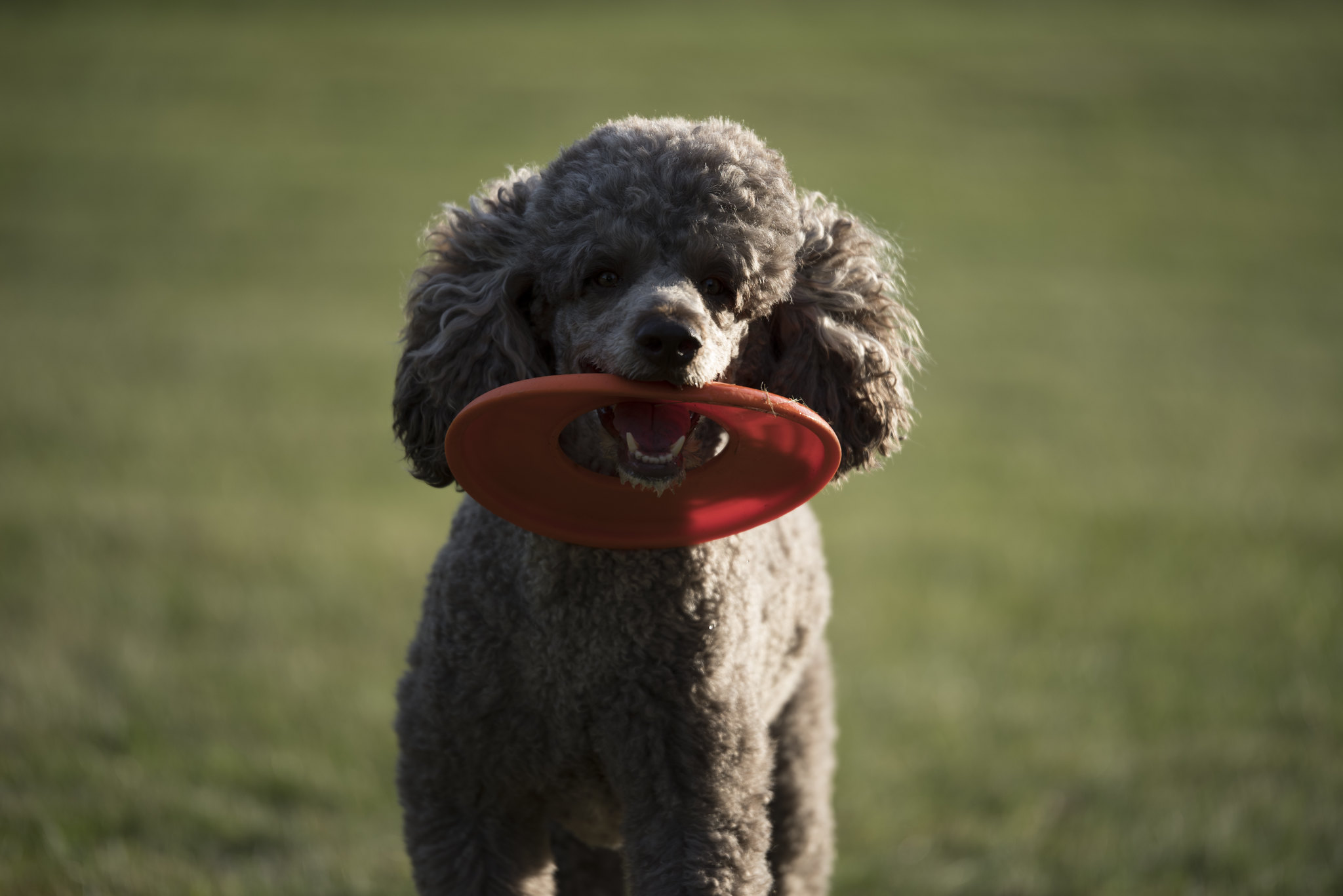
Or this shot:
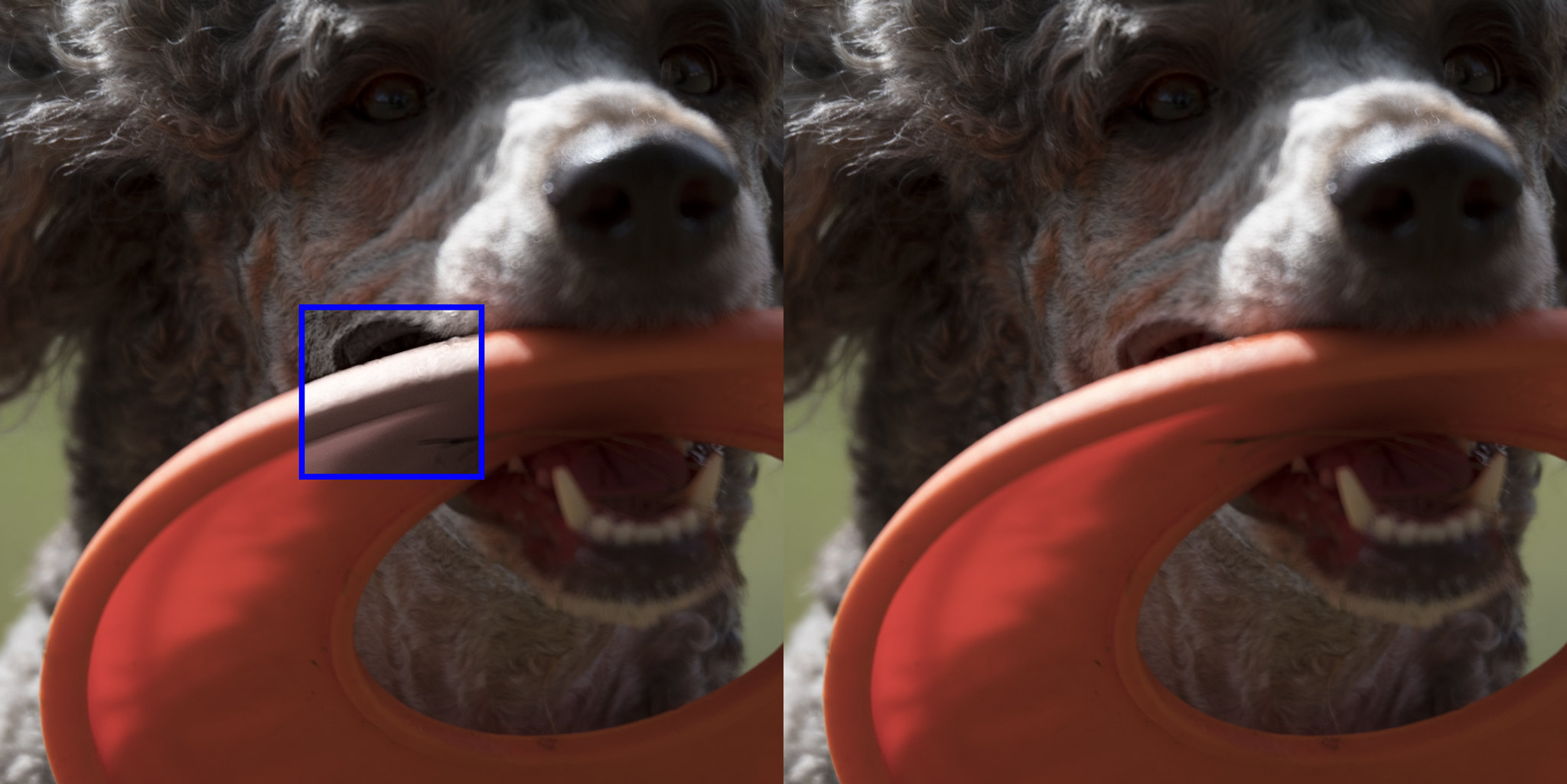
Getting the focus on the eyes with a small DOF, on a Z-Axis moving target, is not that easy. After 2000 shots of practice, I have about a 10% (max) success rate at achieving these shots. I don't know how Auto settings would be able to do this, unless it is luck.
I hope the information is helpful.
|
|
Forum: Pentax K-1 & K-1 II
11-03-2017, 03:30 PM
|
| |
Take one of your User Configuration slots and setup the following settings:
Menu 1
--Phase Detection AF
----AF Mode: AF.C
----AF Active Area: SEL
----AF.S Setting: Focus Priority
----1st Frame Action in AF.C: Focus-priority
----Action in AF.C Cont.: Focus-priority
----Hold AF Status: Off
Menu 2
--Crop: FF
--Image Capture Settings
----File Format: RAW
----JPEG Recorded Pixels: XS
----JPEG Quality: 1-star
----RAW File Format: PEF
----Color Space: AdobeRGB
--Dynamic Range Settings: All Off
--Noise Recution: All Off
This will remove almost all of the lag issues you are facing. It won't remove the miss firing of the focus though.
|
|
Forum: Pentax K-1 & K-1 II
11-02-2017, 09:55 PM
|
| |
Yup the K-1 has some Lag but you can change some settings and reduce this.
I started my chronicles with the focusing lag issue with this post: Forum Pos 74 in K1 Autofocust
I found settings that work pretty well and some other considerations to take and listed them in this post: Post 111 in K1 Autofocus
At best I could get about 40% accuracy with moving subjects and a tight DOF. The issue wasn't the Lag for me anymore, but the K1's autofocus algorithm. It uses a hunting style with catch-in-focus to fire it when you set it to Focus-Priority. This hunting style can cause some complications. I am sure that with a fast focusing motor in a good lens you might go much higher than my 40%.
The best suggestion I have for this is to use a single focus point. Make sure your camera is set to allow you to select which focus point to use and set it up that way. But if you are going this way, it is a good idea to map out your actual location of your focus spots. Just so that you know where they really are.
In the end here are things that will help with action shots in the Z-axis with the K-1:
1) Increase your DOF a bit more than what you would think. (Sucks, I know!) In my case I used a DOF calculator for a while just to get a feel for how large it really is, since you cannot properly evaluate it on the back screen.
2) Fine tune your lenses. I used the Dot-Tune method
3) Planning - take your time and decide where the shot is going to be and set up for this. (Pre-focus to that area) In sports, this is where knowing the game and where it is going to go, helps a lot!
4) Practice with your lens to find the range where your lens is the most dead on target. Some lenses have a small throw for a large focus range, this can cause some hunting before the lens lands on the spot, using the K-1 algorithm. Lenses have a sweet spot when it comes to this and it is important to know this for the K-1. The K-1 brings these flaws out in shining colors!
There is quite a bit of woo-woo out there, it is going to be up to you to dial in your style with the K-1 when it comes to Z-axis action. It isn't the best action camera available, not even close. Many professional photographers have commented on this when they reviewed the camera. In some cases they skim over this topic and in others they shine a beaming light on it, but it is a common issue listed in most reviews. But with practice: you could get your action accuracy up there; as long as you manage the DOF well, and plan your shots, you should be able to hit 20-40% consistently. If you know your subject well and know where they will be, as well as get that subject when they are at the slowest in their Z-axis travel, you might even get up to 60% accuracy.
Contrasting lines are important for the focus system in the K-1 so lower light situations will have an affect on the accuracy as well. In a forest situation my accuracy fell to 10% with a moving target on a path. My subject didn't have well defined lines in the dim light and it played havoc on the focus system.
If you are planning on doing a lot more Z-Axis action, consider a second camera. 2351HD expressed his experience in this post: Post 113 in K1 Autofocus
Quote: "You buy a system for what you need it for, so when its great for somebody else if may not be the case for you, but thats fine too." by 2351HD
At the moment I don't do too much Z-axis action. If I suspect there is going to be some, then I bring the Nikon D3000 along (its small) with the K-1 for all the scenic shots. If I do have a greater need for action; I might get a D500, since I have access to existing Nikon glass.
Good Luck!
|
|
Forum: Pentax K-1 & K-1 II
10-03-2017, 01:51 PM
|
| |
Good to hear!
Just to clarify:
While in Bulb mode: Use the green button to toggle between regular bulb mode and timer mode. You can then use the index dial to increase the time on the timer.
Bulb mode with Astrotracer turned on, adds this additional feature of the timer. You can use Astrotracer with regular bulb mode or the additional timer feature (in bulb mode).
Both Bulb mode and Bulb Timer Mode can exceed the maximum sensor time, but once you do the star trails will suddenly be introduced as the sensor hits its maximum travel.
The reason to step away from the camera and tripod is to avoid any additional shake to the system. It won't do much to the compass as long as you don't have a lot of metal on you.
I use this $10 remote shutter. This remote works best with the timer mode. I found that if you use bulb mode (with one shutter press starting bulb open and one shutter press stopping bulb mode - Found in C Menu) you will be in a perpetual shutter release. The remote emits a long signal when the button is pressed. Pressing the remote button once will start the shutter open event. When pressed again, the shutter will close, and since the remote releases a long signal, trigger another shutter open even. You then have to turn the camera off to get things to stop. Which means calibrating everything from start again. But in timer mode (which can go up to 10 minutes) everything works great and it lasts long enough for most capabilities of the Astrotracer tracking.
For focusing:
First set your F-stop to what you would like it to be. I like using the sharpest setting that the lens can operate at with the lowest F-stop value. For that look at this website:
Lense Sharpness
Find your lens and then look for the focal length you are going to use, and locate the F-stop column that has all dark blue or mostly dark blue. This comes down to your preference here.
Now onto focusing: I go into Live View, then hit the OK button to go into zoom mode. Love the tilt screen here!!! I use the Thumb dial to zoom out and try to find a bright star (play with the thumb dial here so you are not too zoomed out to start with). You might have to play with the focus here to locate something. I then zoom in (thumb dial) a bit and then start playing with the focus. Your aim is to get the star to appear as small as possible. This is one of those other dancing parts, playing with the thumb dial to locate a star and the focus ring to get the focus. The smaller the star is the more in focus it is. Once you have this sorted, you most likely won't have to touch the focus again. Just to make sure I don't touch the focus, I flip the switch on the side of the camera to Manual Focus. You can now look into any direction in the sky and all the stars will be in focus. This is the true infinity focus point of your lens at that temperature. You will note the lens can go far beyond what the infinity focus is. This is to accommodate adapter rings (and such items) as well as accommodate temperature changes. If the temperature changes dramatically, while you are outside with the camera, you might have to refocus. This is why it helps to let your camera sit outside for a few minutes before you begin the whole process. Pro Astro-Photographers will do this between 30 minutes to 60 minutes, for their gear, but this is to avoid heat waves coming off their system and distorting the optics.
Locating what you want to shoot:
I use the Sky Map app (Android Google Play Store) to look around for where objects are in the sky. I then target that area as close as I can with the setup and take a short 15 second exposure. I then can look at my picture and see if the object is actually there. I then re-adjust the position until I have the object in sight and then I increase my exposure time.
Yeah, a solid tripod is a good investment!
What to do after Astrotracer has hit its limit:
It is good to know what is involved as you go beyond the K-1's capabilities. Including the cost of items. Lots and lots of costs!
I found the information in these videos below useful even for my K-1 Astrotracer. It helped me understand the importance of a solid tripod, and the issues related to tracking.
If you get more interested in Astrophotography then look at these three videos, they give a good insight into what is involved, as you step up your game:
You Tube
|
src="https://www.youtube.com/embed/9d0292TBMHo?controls=1" allowfullscreen>
|
You Tube
|
src="https://www.youtube.com/embed/zQB6UnrTEEM?controls=1" allowfullscreen>
|
You Tube
|
src="https://www.youtube.com/embed/sW8NyT3r2LU?controls=1" allowfullscreen>
|
|
|
Forum: Pentax K-1 & K-1 II
10-02-2017, 01:39 PM
|
| |
Rturbett I think you missed one special dance that still needs to be completed. :)
Here is what I was able to get at 2 minutes:
Andromeda Galaxy
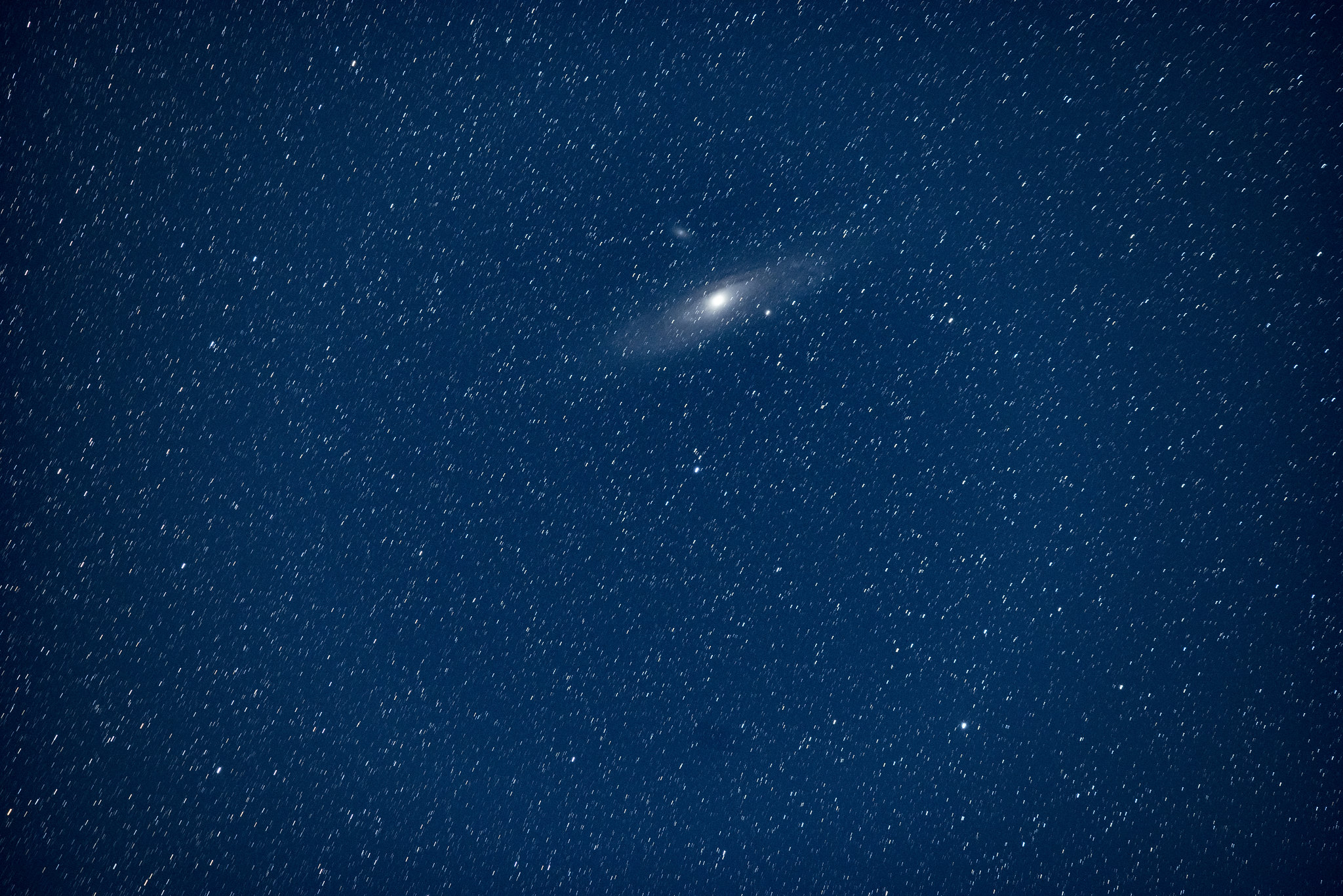
I used f/4.0 because this lens is at its sharpest at f/4.0 corner to corner at 200mm.
There are still star trails but for 2 minutes it isn't much. Even at 60 seconds there were some star trails.
Here is what I found to work best. You need to turn on the GPS before even turning on the Astrotracer (As you pointed out). Make sure the lens you are going to use is mounted on the camera. Next make sure the GPS gets a signal with the icon changing. Next mount your camera to your tripod and make sure it is VERY WELL secured to the tripod. Next stand exactly where you are going to place the tripod and as far away as possible to other metal objects. Now turn the mode to Bulb (B) mode and turn Astrotracer on. Press the +/- to calibrate and proceed to spin the camera and tripod together to calibrate the rig. The reason for this is that the camera has an internal compass and by changing the proximity of metal to the camera will change the calibration of the compass.
Two things will affect how much star trails you will get. The higher you point in the sky the more trails you will get. This is another picture I took which was much lower in the sky and pointing almost West North West about 40 degrees up from the Horizon:
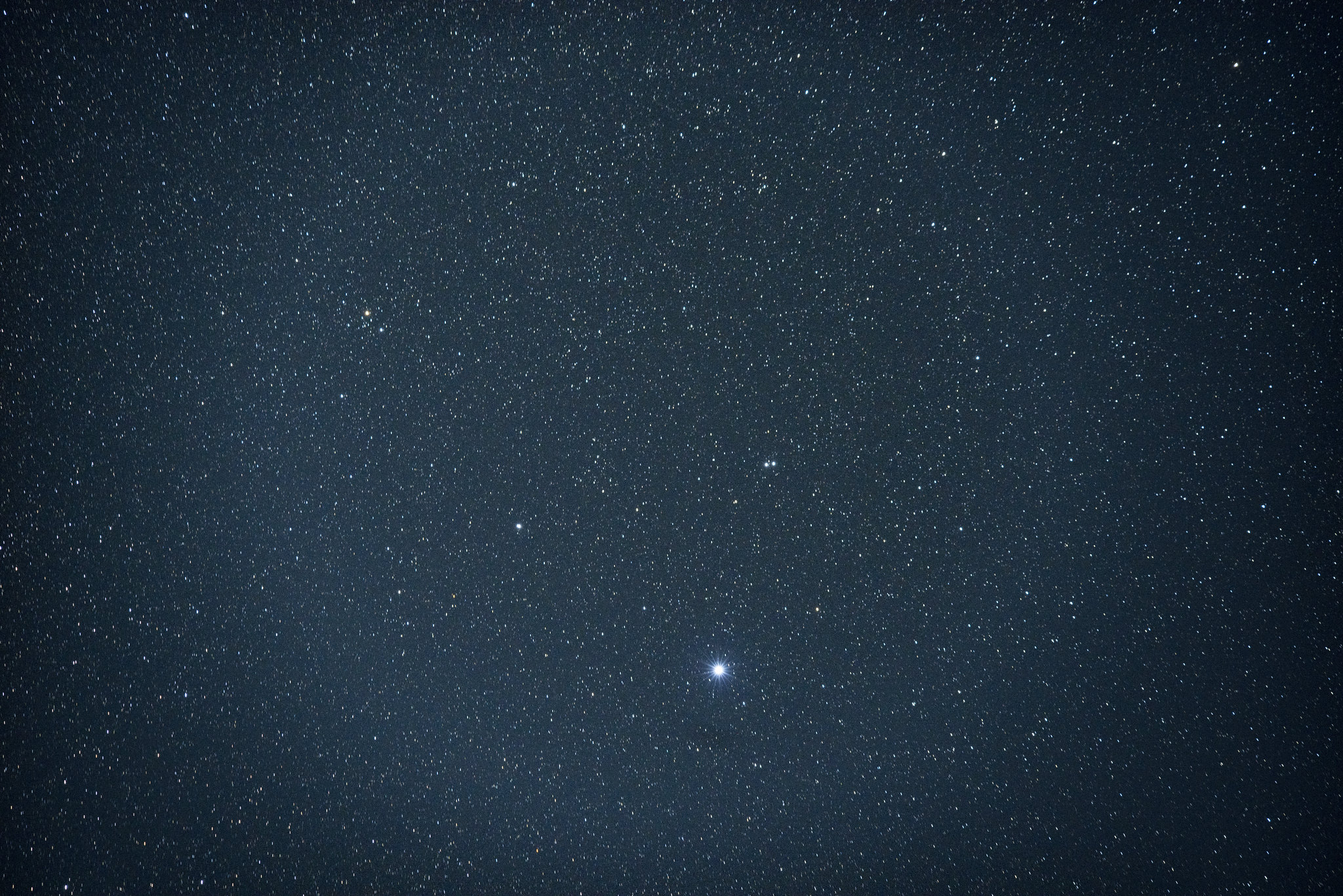
The other is the wider your camera lens angle, the less of an effect the trails will appear to have in your picture.
The trails will always be worse towards the edge of the picture.
Bulb mode has two versions with Astrotracer turned on. One is regular bulb mode, where you keep the shutter depressed while you want to shutter open. The second mode is a timer mode. You can cycle between the two modes using the green button in the back. While not in live view and in Timer mode there will be a block displaying the maximum shutter time possible for the tracking sensor with the lens combo you have (I have firmware 1.41). As long as you don't exceed this, you should be good.
Also invest in a remote (I have an IR one) and stand back when you start the shot and keep away. You can watch the GPS light come back on when it is done processing.
I hope this helps.
Edit: oh, if you are using a telescoping lens, have it set to the focal length you are planning to use before calibrating the astrotracer. Always envision how metal parts moving in proximity of the camera would affect the compass.
|
|
Forum: Pentax K-1 & K-1 II
10-02-2017, 09:30 AM
|
| |
I am writing this post as a summery. I have developed quite a tentious rapport with the K-1 Autofocus system. And I will be leaving this topic for others to contribute to.
So after I had practiced with over 2000 shots to get a good setup, I went hiking with the Pentax K-1. I have to say that the Autofocus, with a moving subject, is just not what you would expect. Within the forest, I got about 10% success. With the lower light in the forests I really needed that lower F-stop value to get the shutter speed a bit higher. I think 2351HD has a good point: The K-1 is great for landscape, probably the best in that category. It will most likely be a tie for portrait shots as well.
I now have read all the Guides (that I could find), including the ones suggested by angerdan. As well as come across posts by biz-engineer (1, 2, 3), who got those amazing mallard shots, and everyone who is honest about the autofocus of the Pentax K-1 (such as Winder), and the conclusion is as follows: Yes you can get great shots of moving subjects, but be prepared to push your DOF larger than you expect. Most common suggestion I found so far is that you need the right setup. It is true that the more you prepare for where the subject is going to be the better your focus success will be. And that there are settings that affect the lag between autofocus and shutter release. But even after all of these considerations, you might be better of with a different camera if you are interested in more action shots. I have totally fallen in love with the K-1 but I think 2351HD has a good point and once I get more into action, I will most likely invest into a Nikon D500 as a second camera (since I have some Nikon glass, and the D500 is comparable to the K-1 in price).
My only critique so far is that there is a lot of woo-woo, and no one really knows what a good setup is. I think I know why. The K-1's autofocus tracking (z-axis) reminds me of Jack White's comment of what kind of guitar he likes to play. He likes fighting a guitar to get the sound he wants out of it. He doesn't like playing easy guitars, because he wants there to be a struggle. For him the struggle encapsulates the artistry, which might be very true for some K-1 users. I think this process gets people to settle on settings and styles that allow them to get the best out of the K-1 (for them), but in the process they have given up on possible shots as well as adopted some woo-woo into their process. It also makes it difficult for them to relay to others what to do, and this is the point of my critique! After scouring many posts for autofocus information I came across a lot of "they don't know how to use the camera" (refering to reviewers), and "do what I do", or "do what he does" (with vague references) and "if you are struggling then it is your fault".
The one nugget I found that gave me some useful information was the post by beholder3 (I found this by following a link by clackers to a post by biz-engineer who referenced this post; This was before angerdan link) on "Guide to Camera and Autofocus Settings for Shooting Sports". The nugget was found in the "Drive Mode and File Format, Image Style" related to turning down the JPG values. While you are checking out that section, note the horse jumping picture right below "Drive Mode and File Format, Image Style". You will find an image that appears to be back focused (if studied closely), but the large DOF hides it. The rider is right where the post is (beholder3 comments that he focuses on the rider's face), yet there is a lot more ground in focus behind the horses rear hooves than in front of the post.
This doesn't mean you cannot find that low F-Stop value shot that is exactly where you want it; I did it! But it takes the right settings, understanding exactly where your target is going to be, and a lot of practice (2000 shots of the same thing) and I got my percentage to 42%. In a real life woodland scenario it dropped down to 10%. And even in the 42% environment my results would drop down to 15% if the light conditions changed. (Back in the woods): I had my wife handle the camera for a while, with a moving subject, and the first thing she complained about (without knowing any of the back story) was that the focus wasn't where she wanted it.
In my opinion there are 3 main issues with the Pentax K-1 Autofocus system. - The first is the introduced delay between autofocus acquisition and shutter release. This is a settings issue that can be resolved with settings listed here and here.
- The second issue is that the AF system is just not that great at z-axis tracking. It hunts quite a bit more than what people expect. With Shutter Release Priority you can see how much it hunts by looking at the first image sequences of this post. I think in Focus-Priority mode it sweeps back and forth and uses the catch in action mechanism to fire the shutter. The more you look at sequences (2500 on my end), this becomes quite obvious when you notice where the missed focus lands. It also makes it unpredictable to know what will be used to determine when the subject is in focus. If it sweeps from the back of the subject, then a contrast line towards the back of the focus point will be used and vise-versa.
- 3D tracking or equivalent mechanism is just not a viable option on the K-1. You can select the feature but it won't do what you hope it will.
I surmise that anyone that gets accuracy levels above 45% is using large DOF to hide the flaws (second part of this post covers that) or the subject isn't moving that fast in the z-axis plane compared to the DOF (this is a common work around, I saw, by shooting the subject from the side).
I don't think it would be helpful to try and obscure these faults. If we can identify them and stress how important they are to the full system, then it allows Pentax to focus on improving these faults in later releases of their products or firmware updates.
For now expect to struggle with the system, and if you really are hoping to get into action shots, you might want to pickup a second camera.
Who knows, a firmware update might resolve all these issues in the future. I keep my fingers crossed.
|
|
Forum: Pentax K-1 & K-1 II
09-26-2017, 02:36 PM
|
| |
It would be just for giggles. :) Auto mode is a modified P mode with all the other settings as Auto. Which gives you no control over Aperture, which could hide a lot of the focus problems in the DOF. More on that in a bit. You also have no way to tell the system what to focus on. It automatically picks it's subject.
After doing some more tests I can report that AdobeRGB mode, with PEF, seems to be about the same as sRGB. BUT I didn't get a lot of shots in to make this definitive. With my new test there might even be a possibility that AdobeRGB is a bit better for autofocus than sRGB, but my sRGB shots were a bit worse than my last measurement. That said I had a lot less shots this time (~50 small sample size), where as before I had 110. So I can at least report that AdobeRGB is the same for Autofocus speed delay or better than sRGB.
The one extra measurement I took this time, was measuring the accuracy, if my DOF was half that of the subject's length. The method was to see how close the focus was to the center spot target. If that was less than 1/4 of the subject length, then I counted it. This caused the percentage of in-focus pictures to almost double in count. In one test the percentage went from 18% to 35%, and in another it went from 33% to 50%. I will discus below how this makes it difficult to compare accuracy tests.
So here is another set of system settings that appear to work well:
Menu 1
--Phase Detection AF
----AF Mode: AF.C
----AF Active Area: SEL
----AF.S Setting: Focus Priority
----1st Frame Action in AF.C: Focus-priority
----Action in AF.C Cont.: Focus-priority
----Hold AF Status: Off
Menu 2
--Crop: FF
--Image Capture Settings
----File Format: RAW
----JPEG Recorded Pixels: XS
----JPEG Quality: 1-star
----RAW File Format: PEF
----Color Space: AdobeRGB
--Dynamic Range Settings: All Off
--Noise Recution: All Off
I want to address some of the topics I have become aware of as I have worked on solving the autofocus problem:
The DOF plays a big role in how we asses whether something is in focus. I recently watched this review of the Nikon D850 vs the Nikon D5 focus tracking:
Youtu.be
|
src="https://www.youtube.com/embed/AdX8H6YSfZA?controls=1" allowfullscreen>
|
Identical setups were used for both the D850 and the D5 and in Matt Granger's tests he found the D5 to be about 90% accurate and the D850 to be about ~65% accurate. Both the D5 and the D850 have the same autofocus system. In my opinion the main difference, is the pixel pitch. The D5 has a pixel pitch of 6.41 µm. And the D850 has a 4.35 µm pixel pitch. That is a very significant difference, and is the main component in assessing the circle of confusion for a camera. The larger the circle of confusion the greater the DOF will be, with everything else being the same. It very well may be that the D5 is an autofocus beast because of it's larger circle of confusion due to larger pixel pitch.
Click here for more on Circle of Confusion
I am highlighting this because I feel it is important to understand how difficult it is to asses the autofocus problems. Especially trying to compare two systems to each other. The Pentax K-1 has a 4.86 µm pixel pitch and the Pentax K-3 II has a 3.88 µm pixel pitch.
A larger circle of confusion is also going to give you a larger DOF, with everything else being the same. If you are hunting for a very shallow DOF then this becomes a consideration. It will also show more focus flaws as your DOF becomes smaller.
I am therefore fully aware that for some people the accuracy will be a lot different depending on your DOF, relative to the speed of your subject towards you.
Some additional notes:
I found the Pentax 70-200 to be back focusing more often from 15 meters and further and then suddenly jump much closer into focus at 10 meters. So pay attention to your focus ring throw, it seems to play a role in how close the focus lands and could be a big culprit in your results on your K-1.
The contrast lines on your subject do play a role. clackers pointed this out before, but in the picture below you can see how the camera chose a different spot than what would be obvious.
The line between the top of the lip and the fur was used and specifically the line at the corner of the mouth.

If you want to measure your center point area, you can follow these steps. The link is to the spot where the method is described:
Solving AF Problems - 8 Common Autofocus Problems - And Their Solutions - YouTube
In my setup I used a softbox with the lights on and a square electrical tape in the center. I took a picture everytime the focus settled. I then stacked the pictures and drew red lines to include a piece of the electrical tape from the side I approached it. Then each layer was set to 25% opacity and I got the following result:
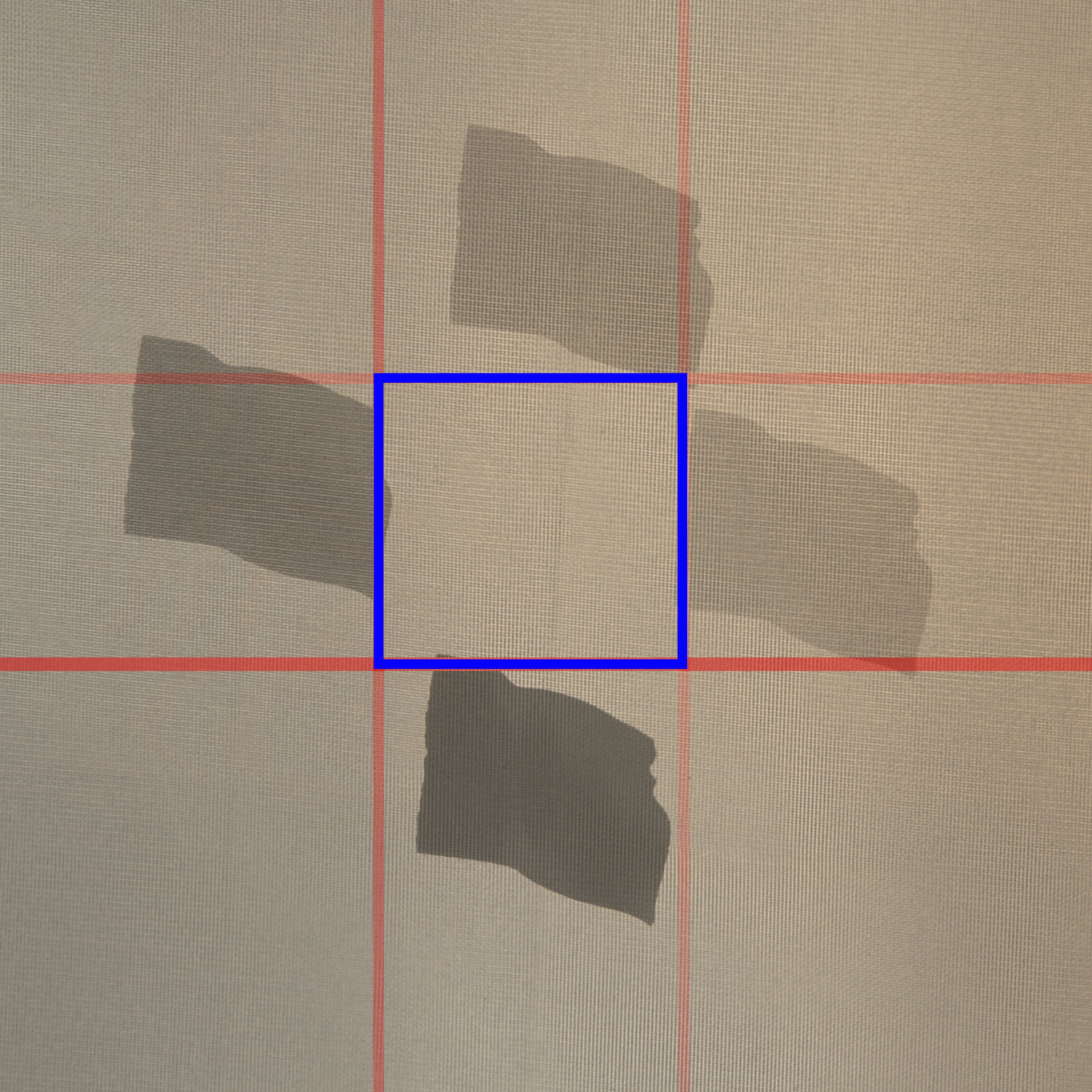
The blue box is an action I created to draw it onto the image. I can run the action at anytime to see where the center spot was. You can duplicate this for all your focus spot. You will notice that a lot of the spots are not where they indicate in the view finder.
It will also be useful to make sure your lenses are fined tuned to your camera. I used the Dot-Tune method and this video gives you instructions. On the Pentax camera you will be looking for the Diamond in the bottom left of the view finder. When lit it will indicate detected focus.
You Tube
|
src="https://www.youtube.com/embed/7zE50jCUPhM?controls=1" allowfullscreen>
|
For most of my lenses I found this to be great. But for one lens it ended up front focusing, and I had to repeat the process. So take sample pictures with different setups to make sure the focus is where you expect it to be.
I hope this is useful for anyone trying to diagnose their own issues.
|
|
Forum: Pentax K-1 & K-1 II
09-21-2017, 05:08 PM
|
| |
Yes it is just SEL. And I have compared SEL vs Center point and they are the same. The only difference is that with SEL you can move which sensor you would like to use. I haven't tried different sensors other than the center one at this point. But from what I know, the best sensor is the center one.
When I have time I will experiment a bit more. I might want to map out all my sensor locations at one stage. So far I have just done the center one.
|
|
Forum: Pentax K-1 & K-1 II
09-21-2017, 04:26 PM
|
| |
Eureka!
With some new settings I now get 33% accuracy with Phase Detection AF set to Auto for 1st Frame Action and Auto for Action in AF.C Cont. This was out of a 109 shots.
With the new settings I get 41.8% accuracy with everything set to Focus Priority. This was out of 43 shots (the dog was done playing).
Here are the 41.8% accuracy settings:
Menu 1
--Phase Detection AF
----AF Mode: AF.C
----AF Active Area: SEL
----AF.S Setting: Focus Priority
----1st Frame Action in AF.C: Focus-priority
----Action in AF.C Cont.: Focus-priority
----Hold AF Status: Off
Menu 2
--Crop: FF
--Image Capture Settings
----File Format: RAW
----JPEG Recorded Pixels: XS
----JPEG Quality: 1-star
----RAW File Format: PEF
----Color Space: sRGB
--Dynamic Range Settings: All Off
--Noise Recution: All Off
With these settings I got this shot:

The nose is out of focus, the eyes are in focus and then by the time you get to the ears they are out of focus again. Very shallow depth of field. I got a total of 3 of these with very shallow DOF, placed exactly centered.
With the higher hit accuracy I can now notice that the Pentax 70-200 lens is also lagging at further distances and is more dead on at about 15 to 4 meters.
Thank you for everyone who provided some input. Sure Nikon and Cannon might have better Autofocus systems on the flagships, but I can live with 41%.
Who knows, there might be more to squeeze out in the future.
|
|
Forum: Pentax K-1 & K-1 II
09-21-2017, 02:25 PM
|
| |
Exactly! At this point I surmise that you are spot on! I am leaning more and more towards the idea that people who are finding the autofocus tracking as super fast and accurate in the Z-axis, are most likely masking the significant delay (unbeknownst to them) with a large enough DOF. The shots like the cyclist by clackers, could be a luck shot, OR he might have some really good setup or technique. Since it is a one off, at this stage, I cannot pin point to how that shot came to be. I am not so confident that my shooting style is the problem, because after measuring my center spot area, I found that the most contrast areas were on the front of the dog within the area, and that if the focus was picking up the background, then the grass would be in focus much further behind the dog than what it is.
From my calculations at f/2.8 my DOF at 20 meters was 1.6 meters. Which is more than the dog, yet the focus wasn't encapsulating the whole dog, just the rear and the grass behind him. At f/4 it would be 2.2 meters, which might have been enough to bring the head into focus. At f/5.6 the DOF is 3.2 meters, and f/8 it is 4.6 meters.
What I have uncovered is that some settings do play a role in the length of that delay. And I think this delay is the key to the problem that people are experiencing. I think the autofocus method and mechanism of the camera is most likely great (with focus priority), since the results are consistently off. I hope I can identify the settings that can decrease this delay. So far the biggest one is JPEG.
Thank you Winder! Your earlier reply (a few days ago), made me at least realize I wasn't going crazy. And I have to thank clackers because he inspired me to go do more tests.
I probably would never dip far below f/4 on the 70-200 lens at 200mm. You loose a lot of sharpness below f/4 in the corners. But there are those rare shots where you want focus on a small area with sharpness right in the center.
For those that are not aware of what the issue is (since we are several posts in since this was brought up):
Here are pictures with low f-stop values from other camera manufacturers (These are 2008 and 2009 cameras).
Owl in flight
Arabian Horse
Running for a meal | Mabry Campbell Photography mabrycampbel? | Mabry Campbell |
The last one is a horse running towards the camera for a snack. You can see how the head is completely in focus and by the neck the focus has dropped off. In an attempt to duplicate a similar result, with over 900 shots, I got two shots with these kind of result.
Other Testers have found similar issues:
Pentax K-1 Review: The Best Landscape Camera Ever? - YouTube - You will hear their mention of the tracking (although it seems they are buffer hounds).
Special K? Pentax K-1 Review: Digital Photography Review
Winder also pointed this out.
Here is an example of me attempting to get the same kinds of shots:
https://www.flickr.com/gp/153388317@N08/7m3701
You will notice that some of the shots are at f/6.3 and yet I don't have focus on the target. It was the first couple of shots that highlighted the problem to me. I started tweaking settings and got some improvements.
I am planning on testing catch in focus, to see what results it yields.
|
|
Forum: Pentax K-1 & K-1 II
09-21-2017, 10:31 AM
|
| |
So I measured my Center Spot location and created an Action in PS to place it on the picture. I don't have new pictures, so I am using some of the pictures from before to give examples of where the center spot is.
You will see quite a few contrast lines, which should be enough for the phase detection, within the center spot. I flipped the images to Black and White to show the contrast lines.
Here is one of the first pictures I shared in this thread:
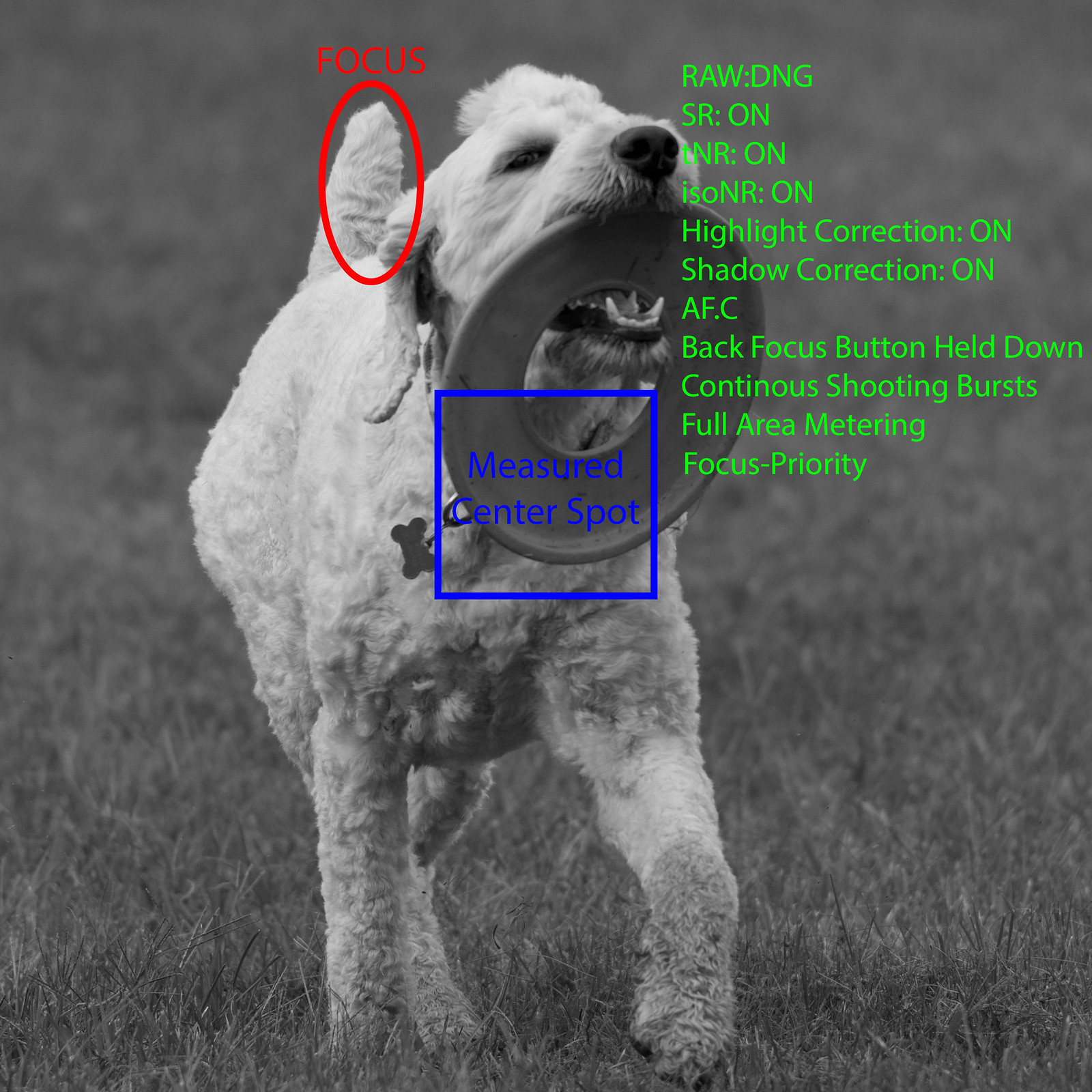
Here is a side by side of the brown dog. There is less contrast lines between his ears and tail than between his nose and eyes. There is a another strong contrast line between the Frisbee and his chest and nose.
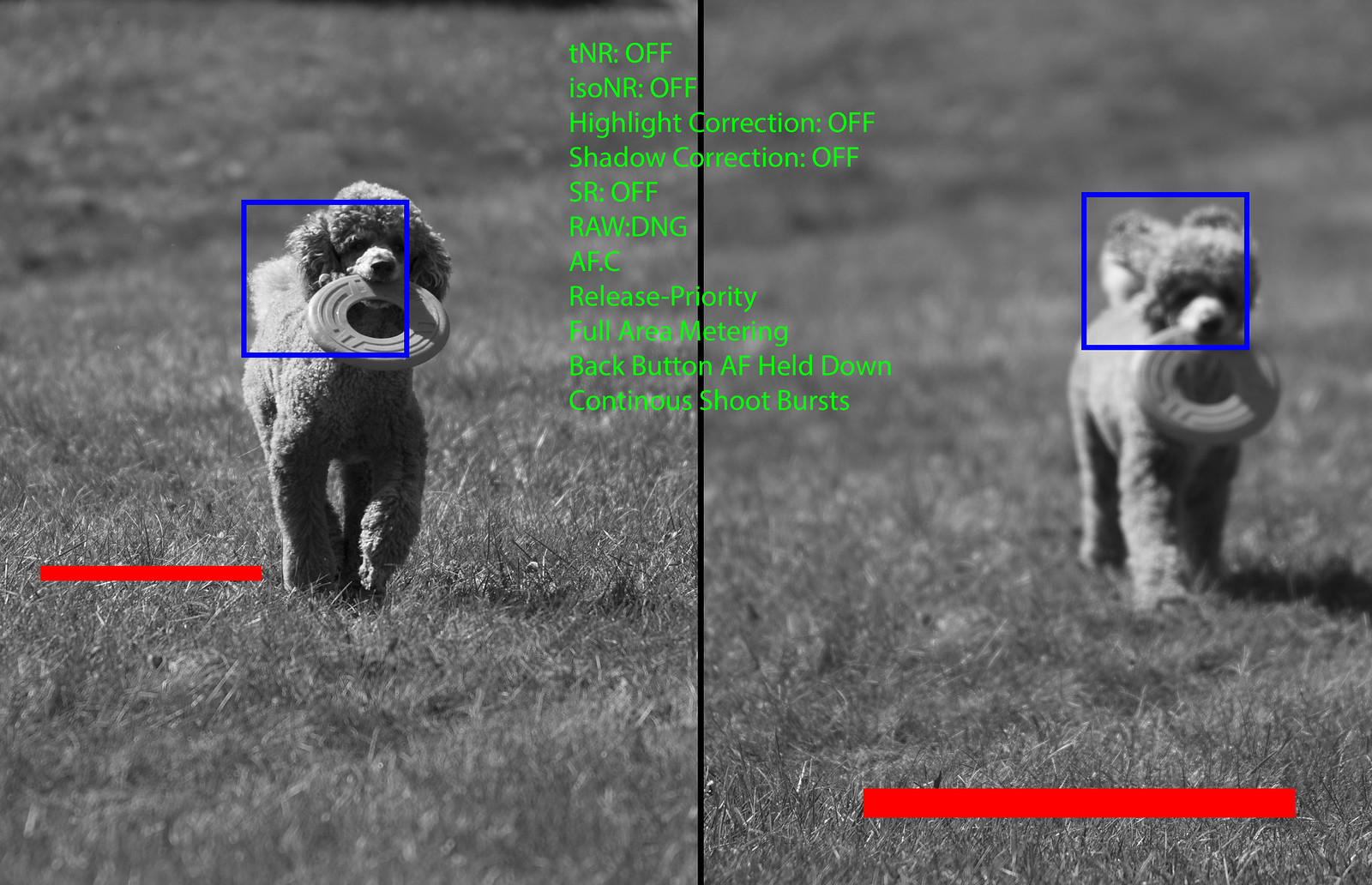
But I agree: it is a variable that should be removed from the equation. I will try to setup a more reliable test method to make sure there are no problems related to my shooting style.
Winder thank you for that information. I mentioned above that I am shooting at f/2.8 on purpose. I agree that I can get excellent pictures at f/8. What I am attempting to do is find the best settings for autofocus, for a target moving towards me. This will give me more choices, so that I may select lower F-stop values and trade that for better ISO values and shutter speed values. The 1/5000 choice was just based on the ISO range and brightness at f/2.8 that day. The f/2.8 is a deliberate choice, since it will highlight any flaws in the autofocus system. Furthermore, I would like the option to separate the face of the dog from the background and its body. I noticed a lot of suggestions to increase the DOF.
I am experiencing a lot of focus issues. There are other people that echo my findings. Then on the other hand there are people that experience no autofocus problems. Like clackers, and biz-engineer. In some of their pictures I find large DOFs (which is great if that is what they wanted, but if there are any autofocus flaws in those shots then I can't discern it).
To highlight the autofocus success and failures we need a shallow DOF, compared to the target, so we can find where the autofocus lands. We also need shot sequences to be able to see if there are misses by the autofocus. biz-engineer seems to cover a lot of those bases, but we cannot see where the focus really lands since the whole target is in focus.
So why are some people finding the autofocus lacking and other don't?
I am attempting to isolate the variables, which is difficult because I have only one pentax camera and one 70-200 lens. I am attempting a more scientific approach to the solution, which requires identifying the variables. biz-engineer and clackers might have a better version of the K-1 than what I have, or better lenses than what I have. Those are very possible variables. They might also have a better shooting style or better settings.
To figure this out, I am trying different settings to identify and eliminate variables. I am trying to avoid the woohoo effect where we feel like X and Y is the solution, and instead be more empirical with the results. It is frustrating and tedious on my part, since I am noticing a lot of woohoo, and testing other's settings with no observable change (I do need a better setup to retrieve more empirical results).
A common woohoo I have heard is: Person X didn't know what they were doing and that is why they had bad results with autofocus. I find this doubtful when people who have a lot of camera experience (NOT ME, Other testers) suddenly consistently get bad autofocus results with a pentax. Questions I have are: what settings did they get wrong? what did they need to do differently in their style, that is different from other camera manufacturers? If the solution is a larger DOF, does that really mean the autofocus of the pentax is on par with other camera manufacturers? I want to know as many true things and as few false things as possible. I have no bone to pick here, just a drive for getting the most out of my K-1 and lenses.
I will be working on a better rig to eliminate my shooting style. If I find the best settings for the autofocus system, and I am still experience problems, then the only possibility is that my lens or camera, or both are not on par with what biz-enginner or clackers'. At that stage I might rent another K-1 and a lens and do the same tests and see what I get. Maybe biz-enginner and clackers have exceptional versions of the camera or lenses. Or they actually have similar focusing issues but have been able to overcome the problem with style and DOF tuning. If you go back to the sequence of shots with JPEG and Focus-Priority you will see that the focus is almost exactly on the face, for many of the shots. So yes, a larger DOF would hide this problem completely.
I hope this highlights how many variables are at play, and so far I have found that RAW(DNG) is a factor in the delay, at least in my camera, between autofocus and shutter release. This could be related to the embedded jpeg in the DNG file, or all RAW files have this issue. But I need to do more tests to determine this. But for now I need to take a break (while I travel) and it will take some time to build a rig to test autofocus and eliminate my shooting style as a factor. I am hoping with a rig that runs at a constant speed, I can actually measure the delays and location of the focus more accurately. This will allow for much more precise determination of which factors play an actual role in getting the best autofocus results.
I apologize if anyone is frustrated by my posts. I truly do value any input, which would lead me to get better results and identify more variables.
Thank you!
|
|
Forum: Pentax K-1 & K-1 II
09-20-2017, 02:51 PM
|
| |
I am posting this as a separate post to keep previous content intact, so that those that read this at a later date may follow the bread crumbs and potentially find possible solutions.
Some new test results:
I selected 4 sets of dog runs with the following settings:
Pentax K1, Pentax 70-200 at 200mm f/2.8. Shutter speed 1/5000 using TAv. File type JPEG. Focus-Priority On. Shake Reduction on. On a tripod. Each Sequence held between 12 to 15 pictures. The average accuracy of the test was 41.15%.
The next test was with another 4 sets of dog runs and a Pentax K1, Pentax 70-200 at 200mm f/2.8. Shutter speed 1/5000 using TAv. File type JPEG. Release-Priority On. Shake Reduction on. On a tripod. Each Sequence held between 13 to 18 pictures. The average accuracy of the test was 23.47%
I determined that the focus was accurate if I found the face of the dog completely in focus. The truth is that some of the shots were still back or front focus in some of the results, even though the face was completely in focus.
I would like to duplicate the Focus-Priority tests again with RAW files, to make sure that I have consistent tests to reference. I would also like to test Full Manual mode as well.
I surmise at this stage: that the best method for action shots is to use JPEG as a file format with Focus-Priority.
|
|
Forum: Pentax K-1 & K-1 II
09-20-2017, 11:45 AM
|
| |
Clackers inspired me to go do more tests. And I have some interesting results.
Again the setup is 70-200 fixed to 200mm and f/2.8. Everything is off, SR, NR, etc. The idea isn’t to get the best picture but to see where the focus lands.
I had an inspiration to test two settings more extensively. The first is to go to Release-Priority on the camera and see if things improve. What I found was that the autofocus is still not very accurate but you now have a new feature that does land you some good shots, once in a while. The jumping focus is now back. Generally the focus starts behind the target and then passes the target. At this point you have a shot at getting a picture right on where you want the focus, if the firing of the shutter is on the spot. The next step is that the autofocus detects the front focus and either stalls the progression or reverses the focus direction. At this stage the focal range passes through your target again and you can yet again have a possibility of a picture you would like. It might cycle through this several times but once in a while it will settle on your target for a few shots, and then it will loose it again.
The picture sequence below demonstrates this (I have several similar sequences):
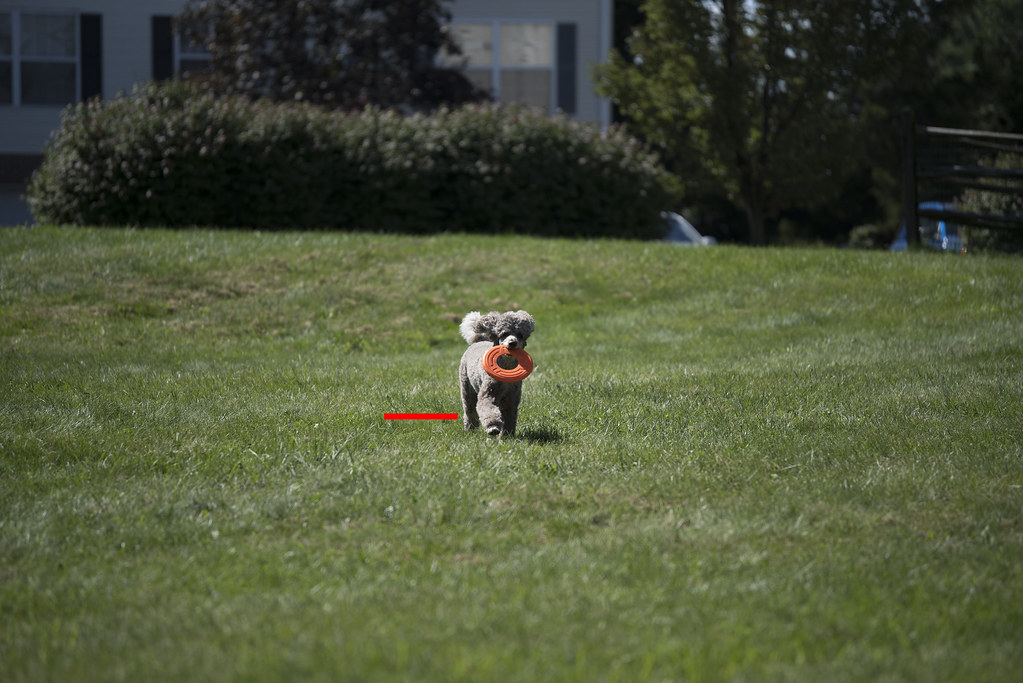
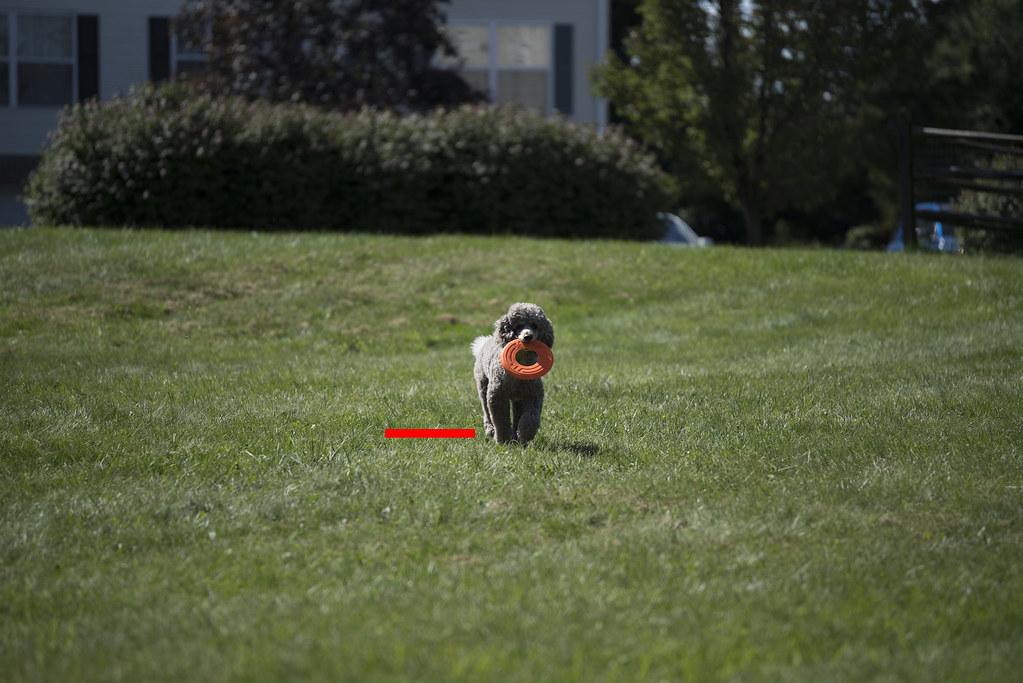
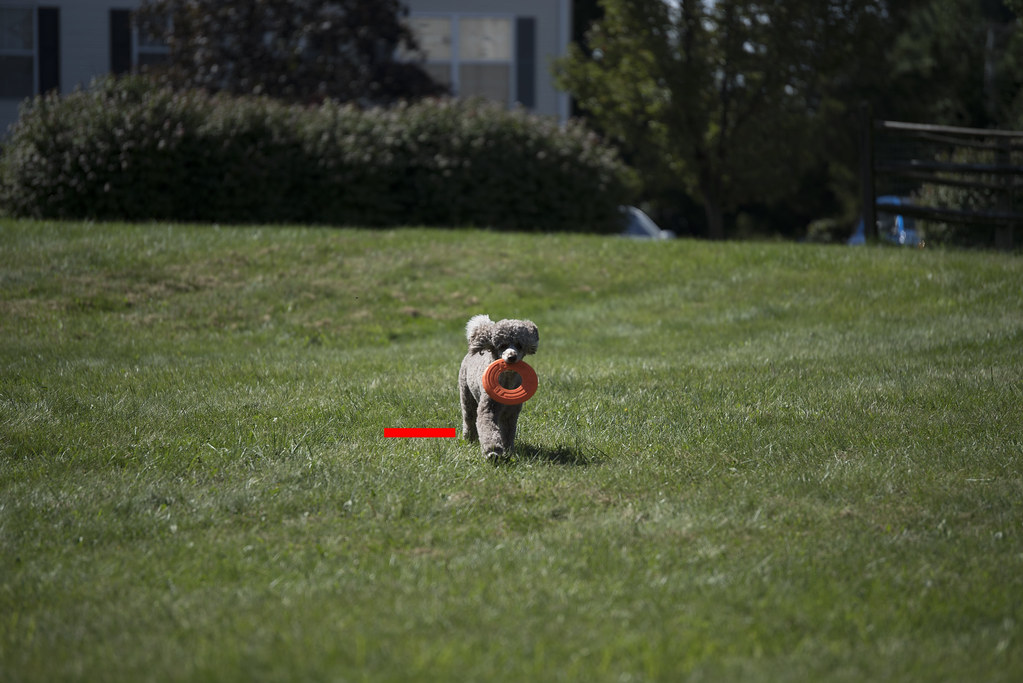

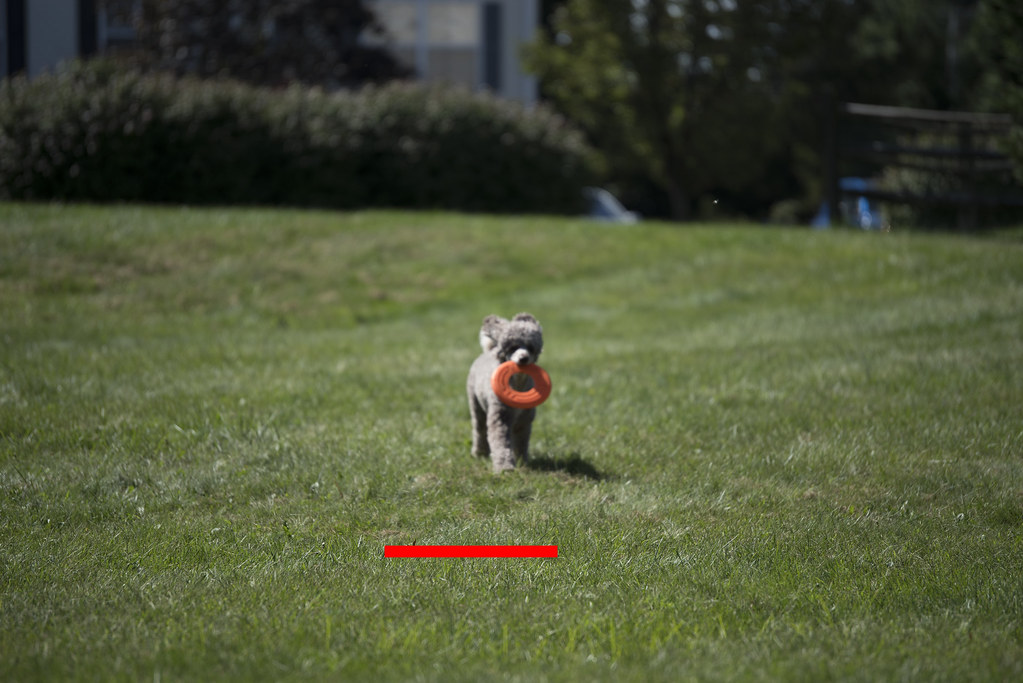


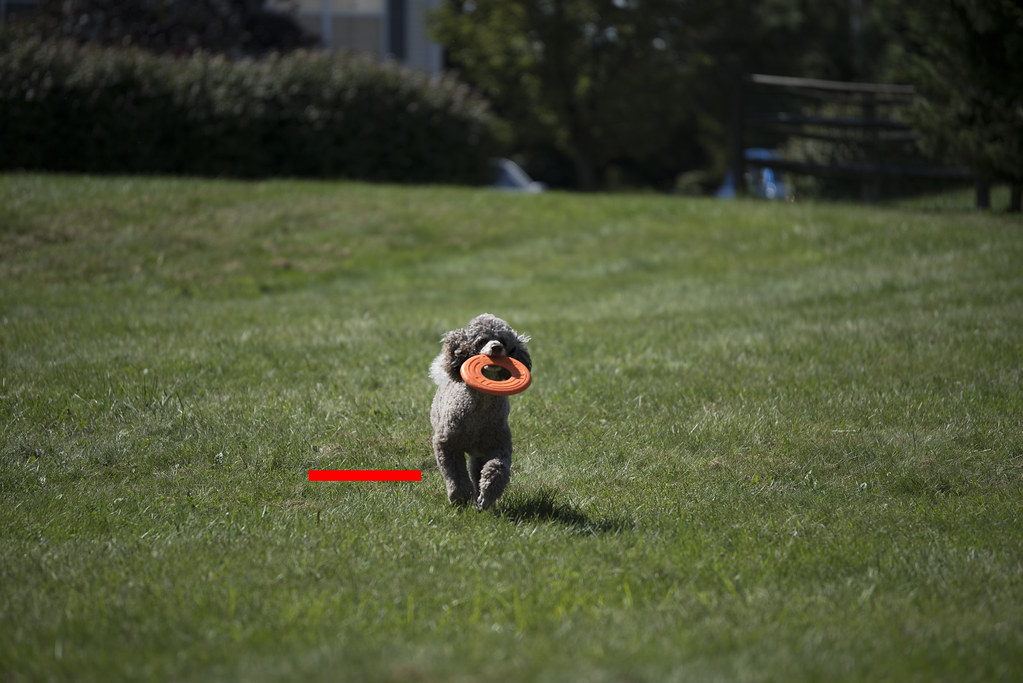
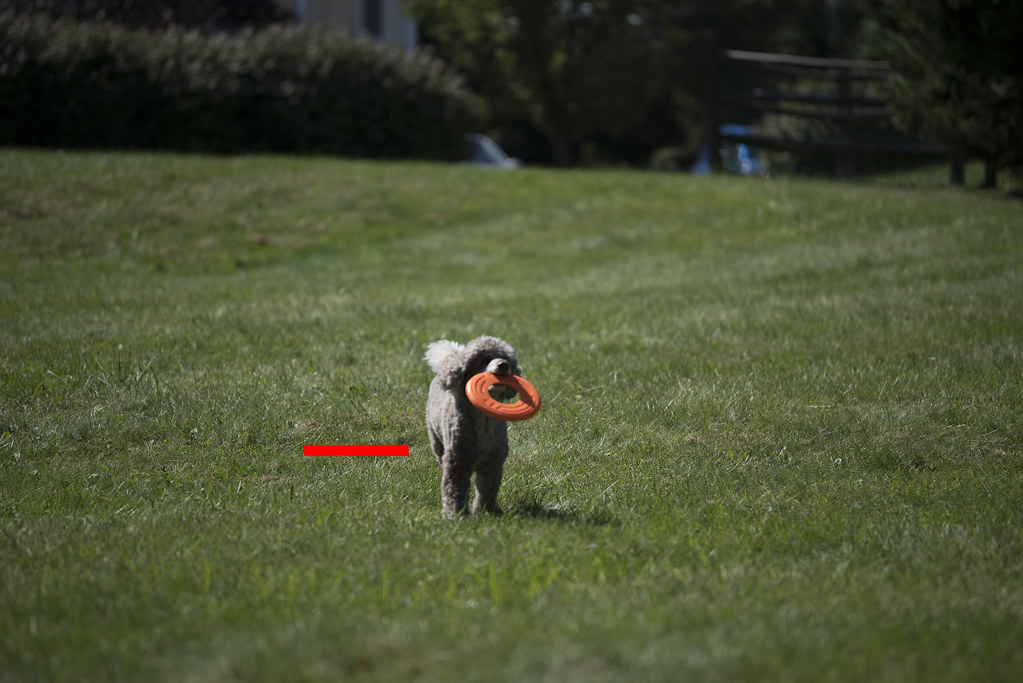

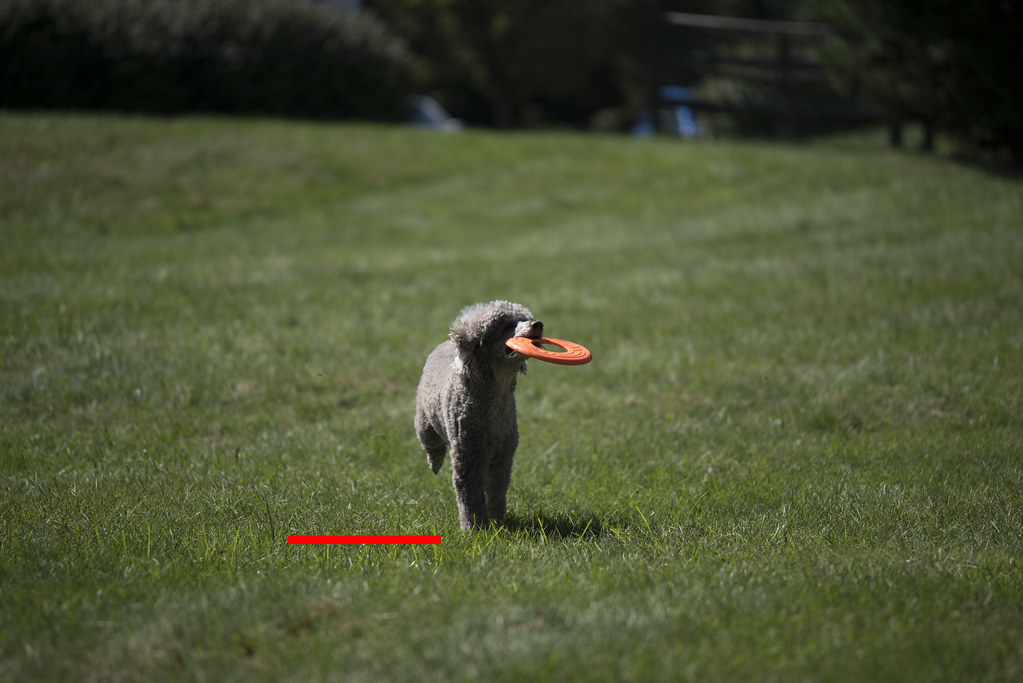
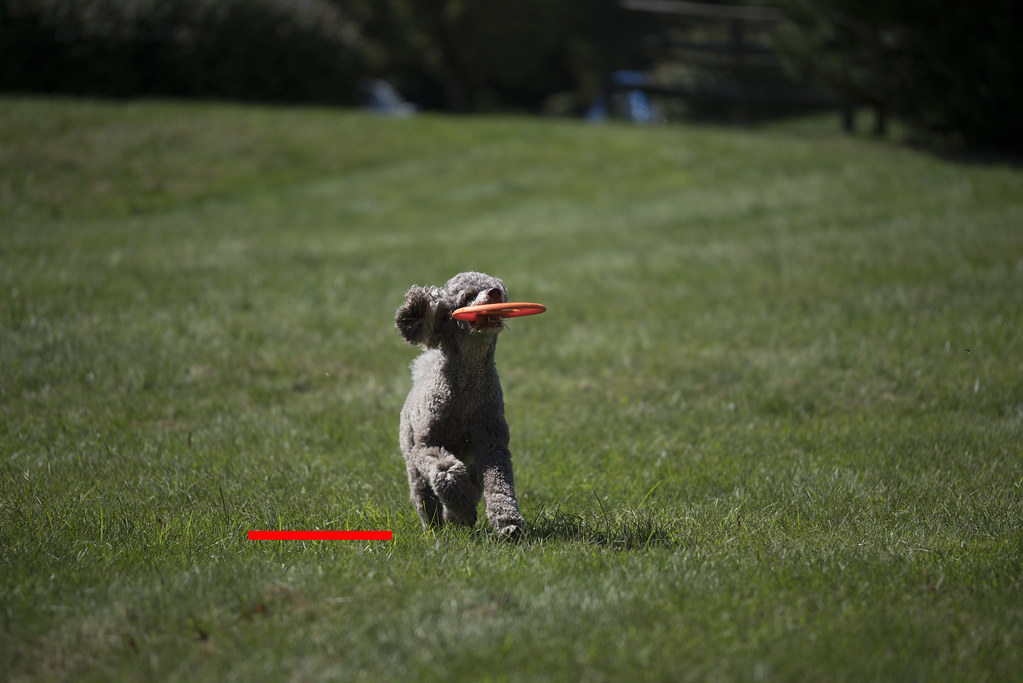
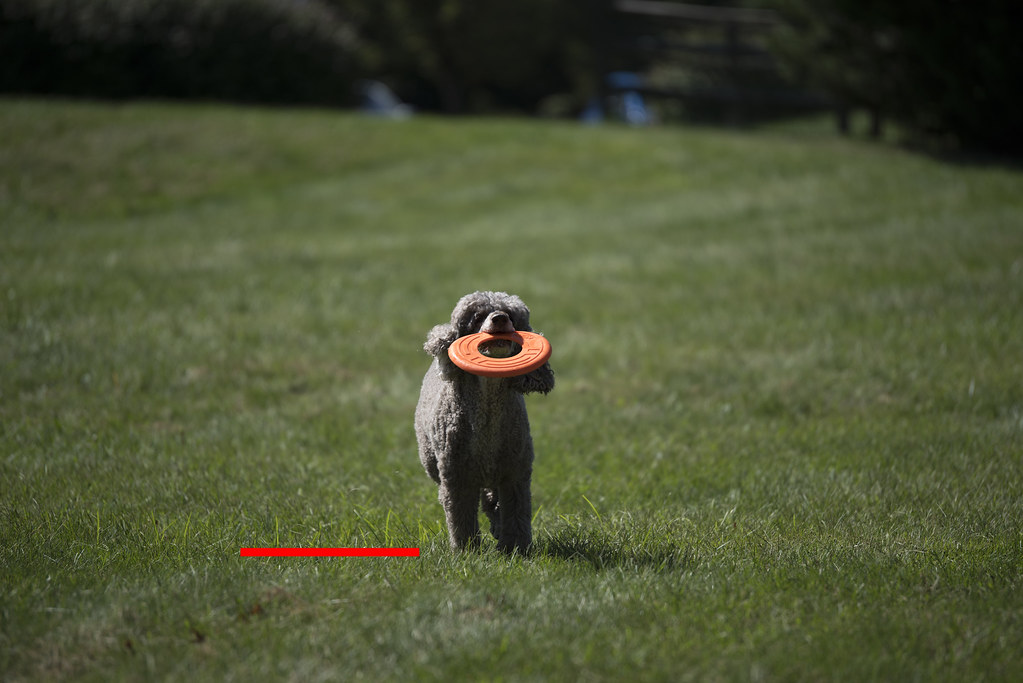
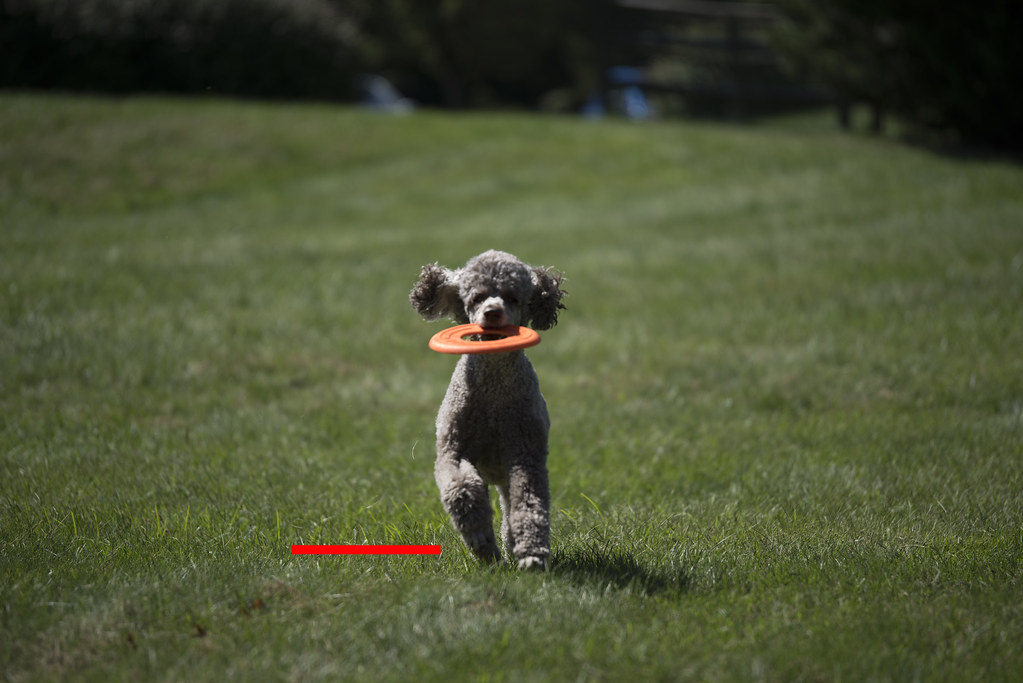
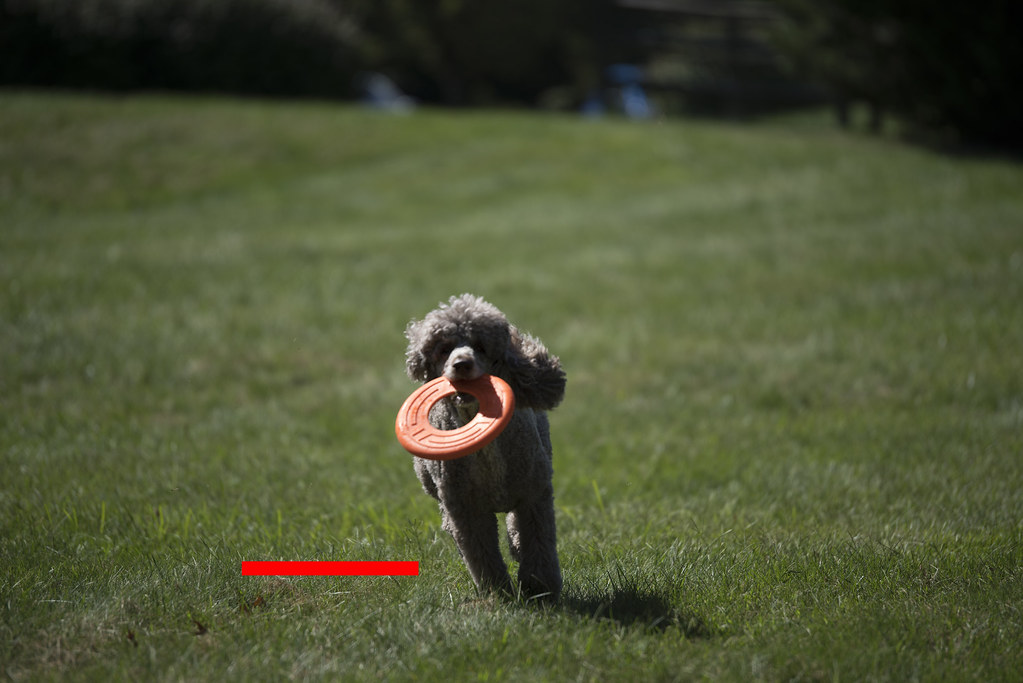
In picture 7 it appears as if we have a dead on hit, but the focus is actually mid body of the dog. In picture 10 through 13 we have dead on hits. The focus then falls behind again, from frame 14 to 15. So the in focus shots is 4 out of 15. Which is a lot better than my previous method. There might be something to say about the lens’ ability for fine control at the further distances. The amount of movement on the focus ring from 10 meters to infinity is really small and this could be a culprit. But keep in mind the focus is lost again at frame 14 and 15. So the lens could still be a very viable culprit at this point.
And then I did a second test. This time I switched to JPEG. My thinking was that the JPEG compression algorithms are well established and many dedicated CPUs have built-in pipelines for JPEG compression. Maybe this would free up the CPU and the buffer. I was back to Focus Priority and 200mm with f/2.8.
JPEG with Focus Priority Sequence:
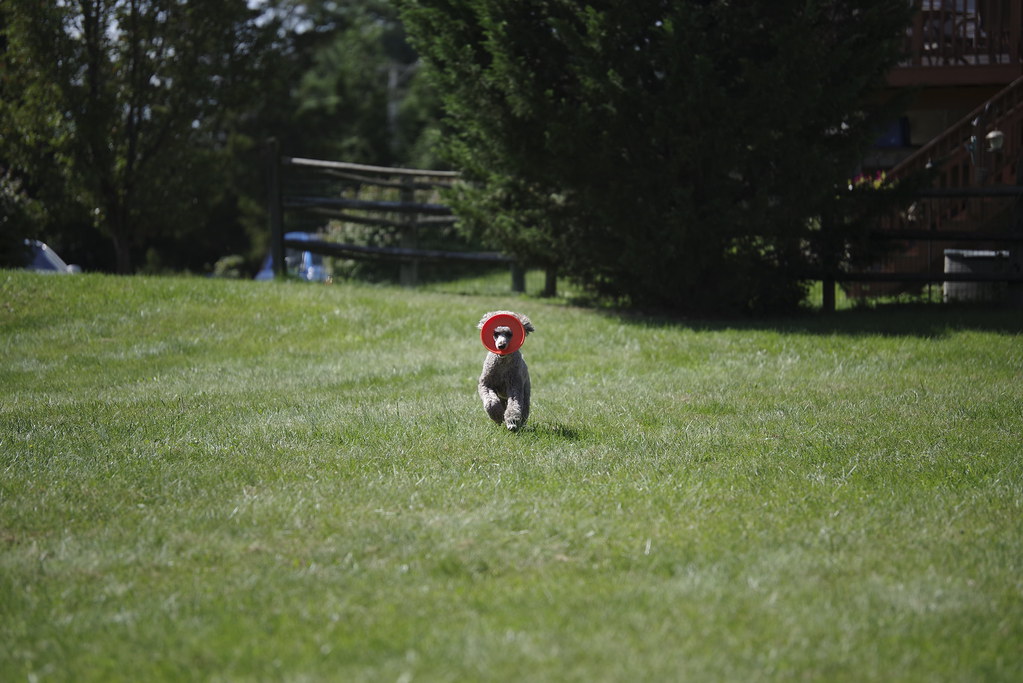
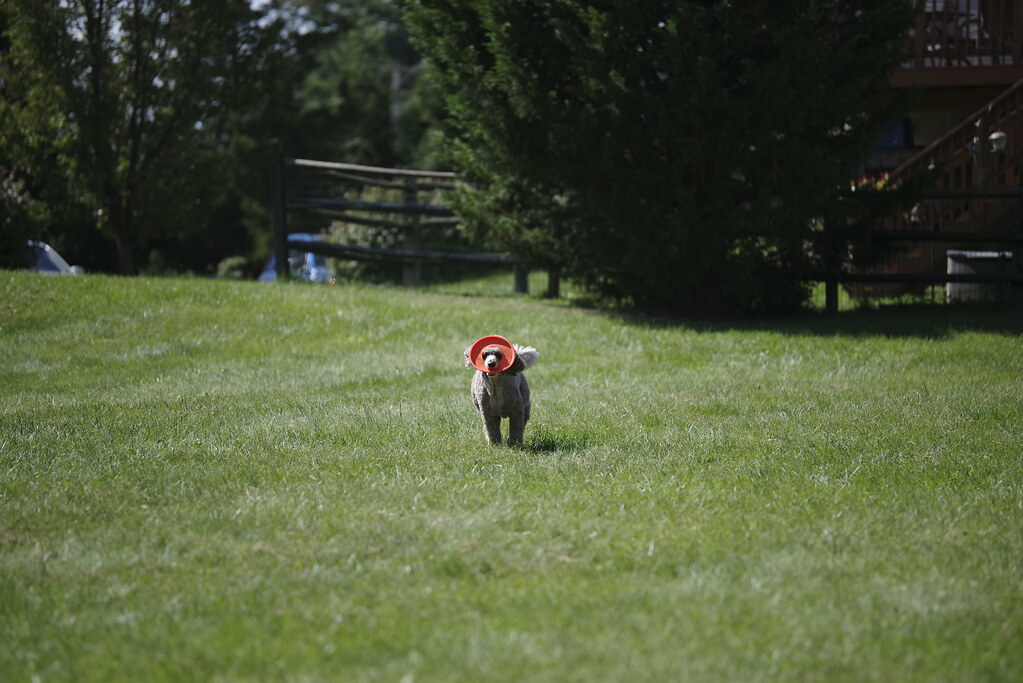
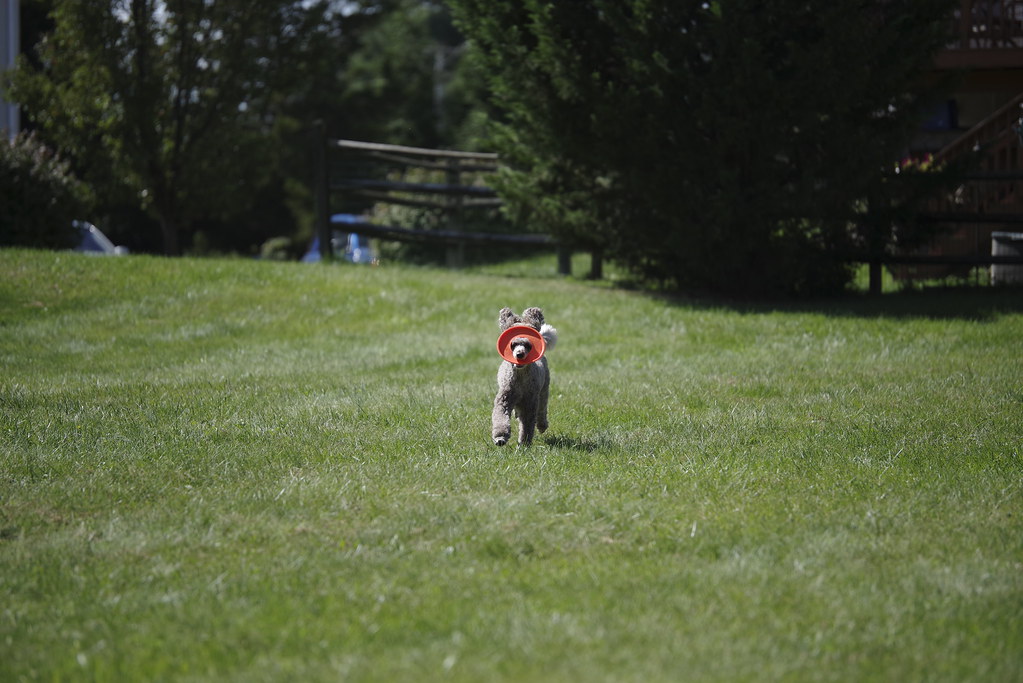
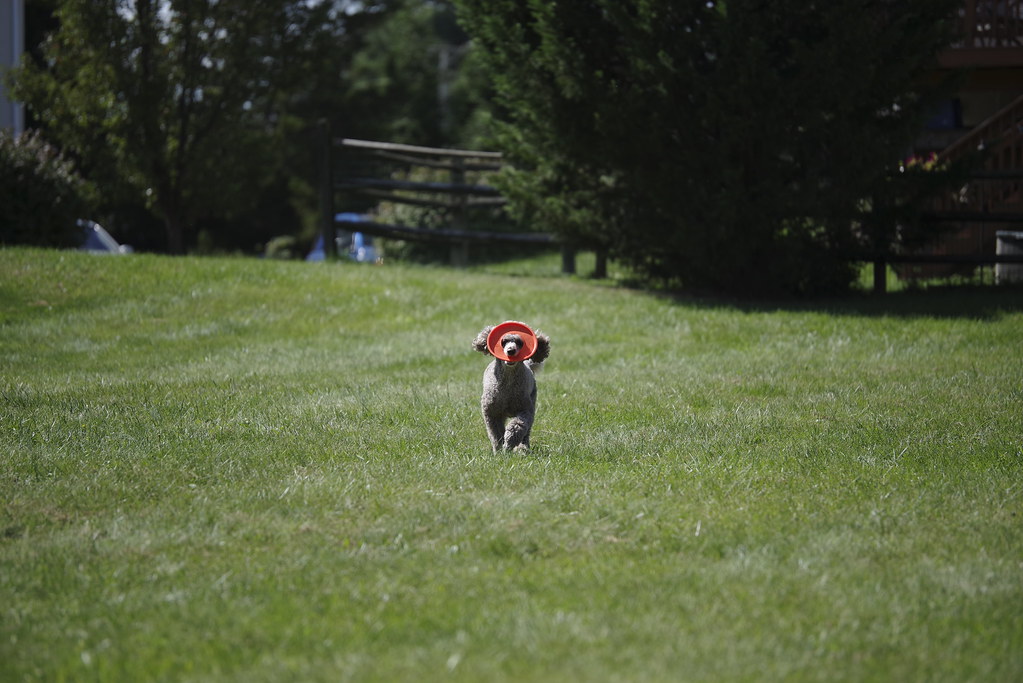
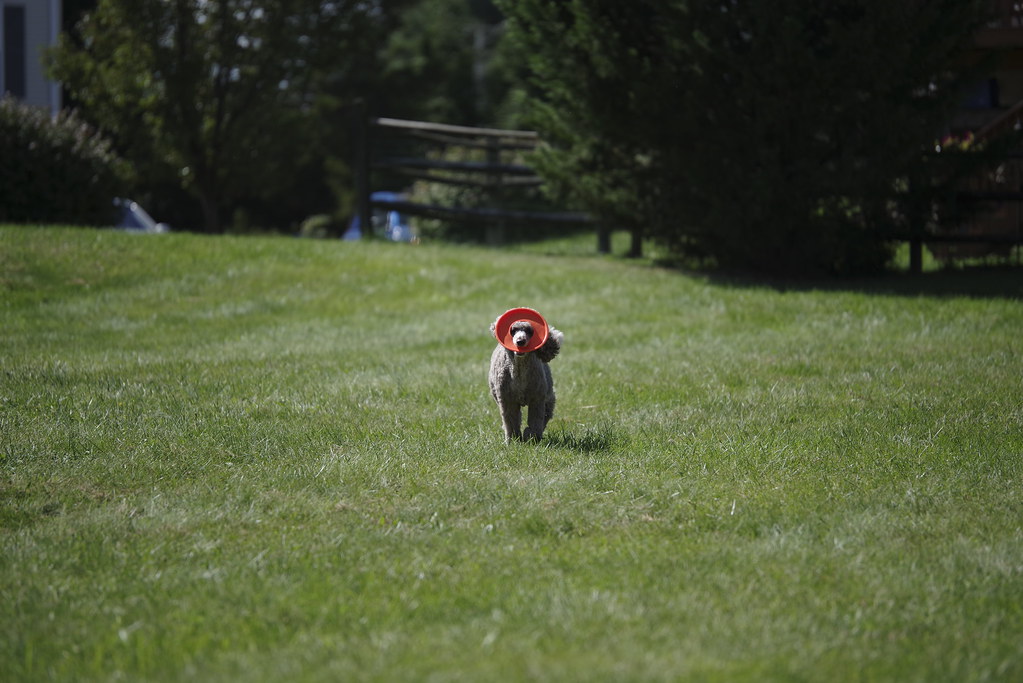
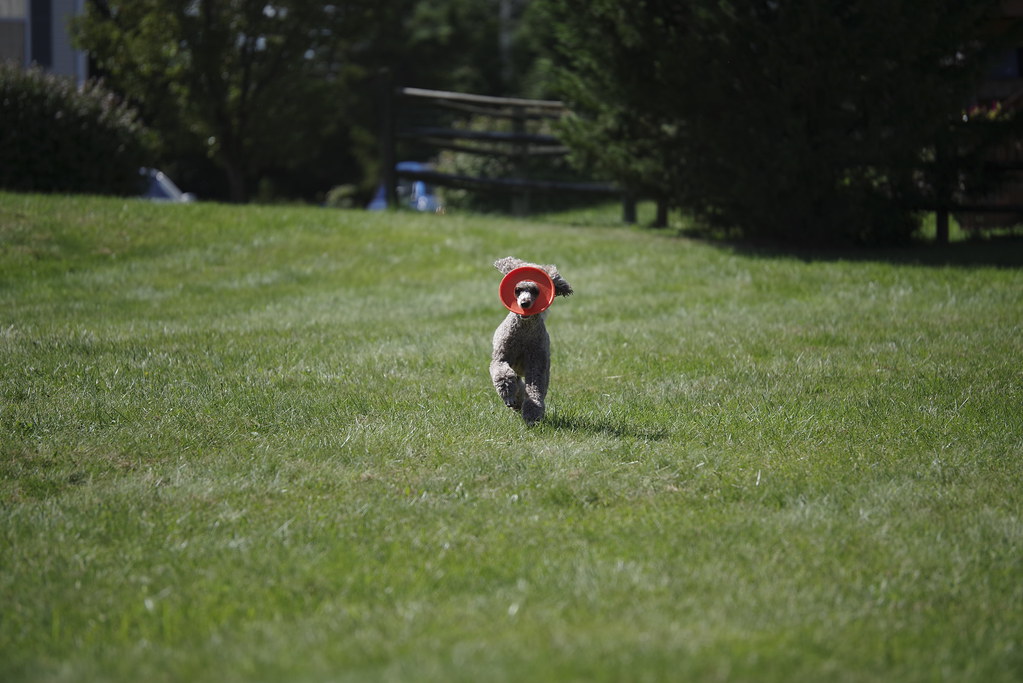

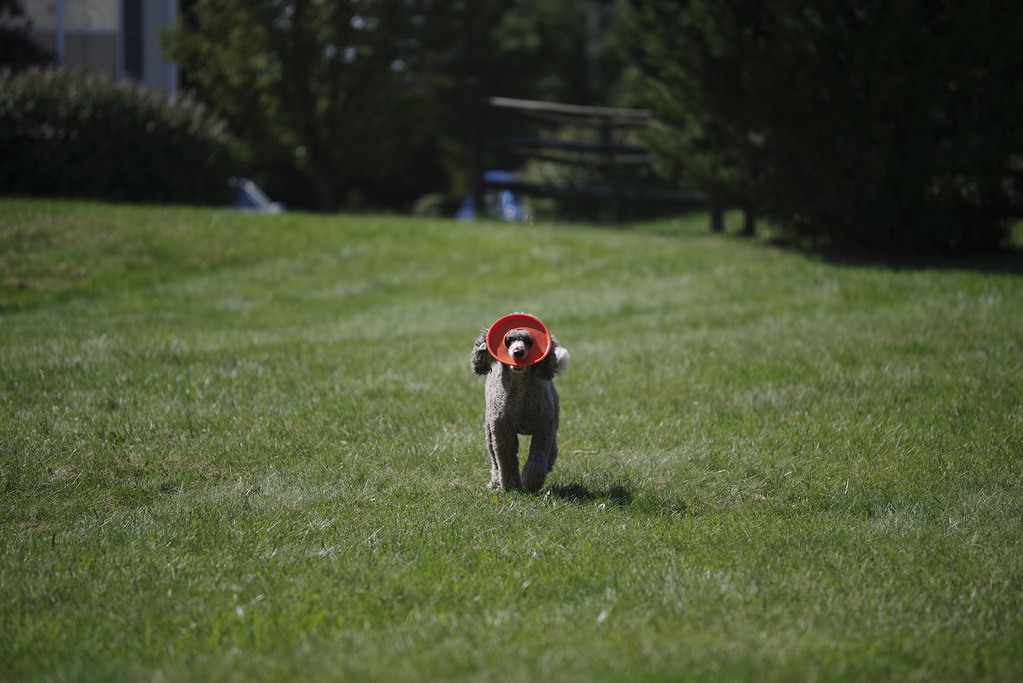
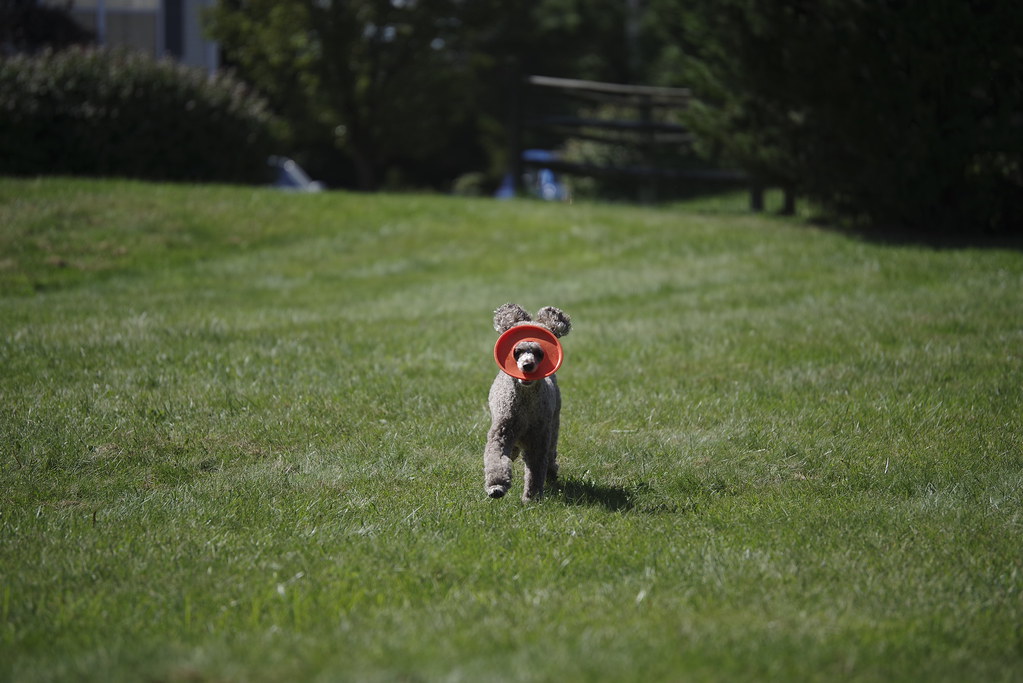
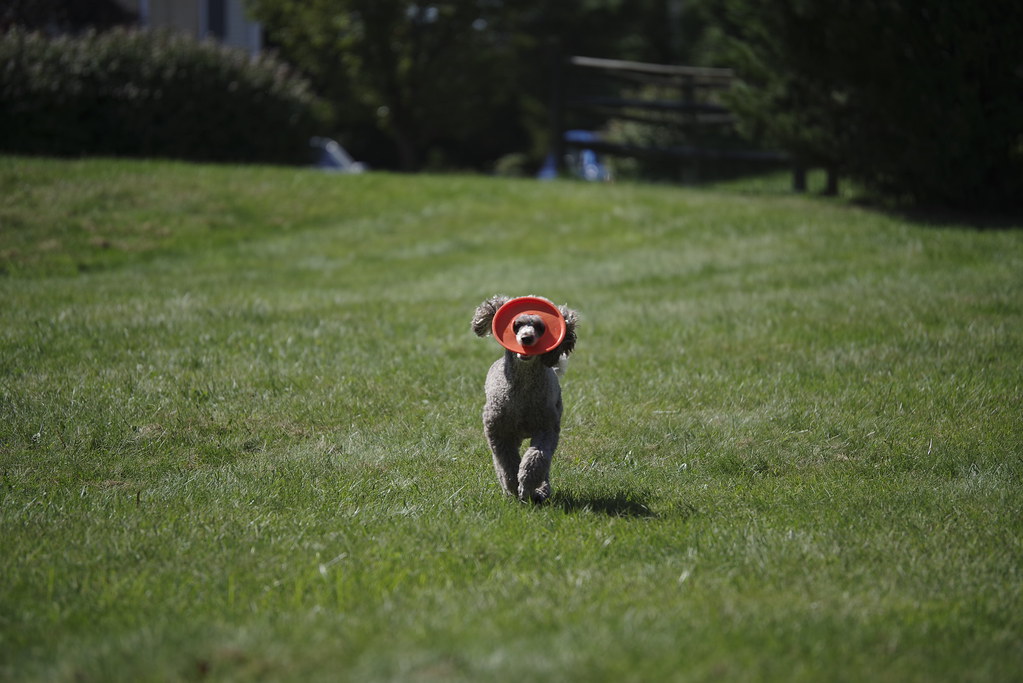
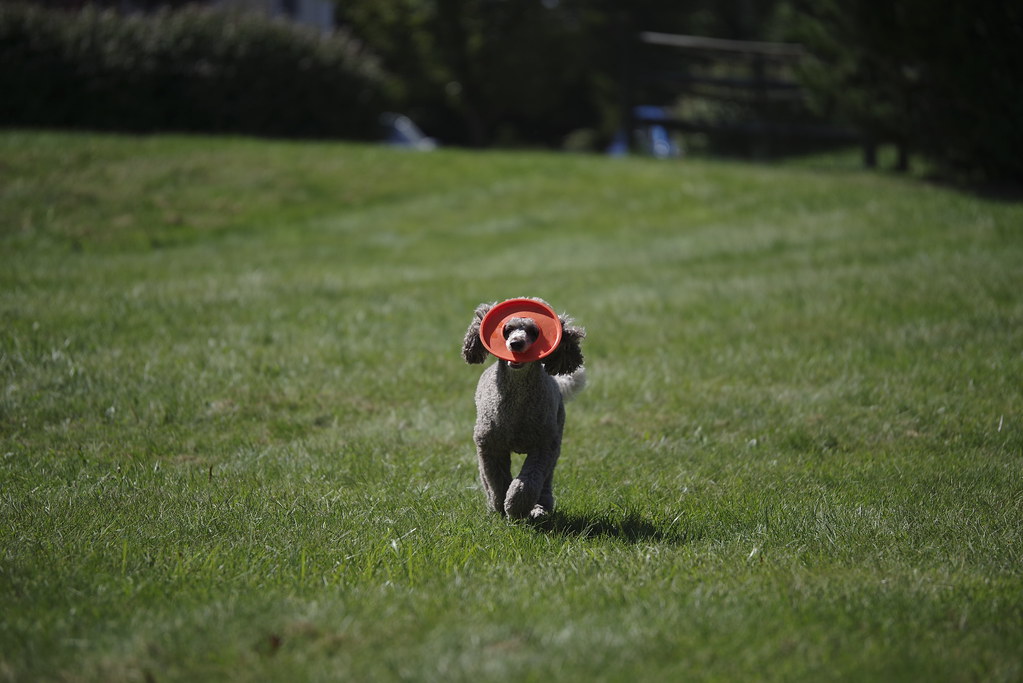
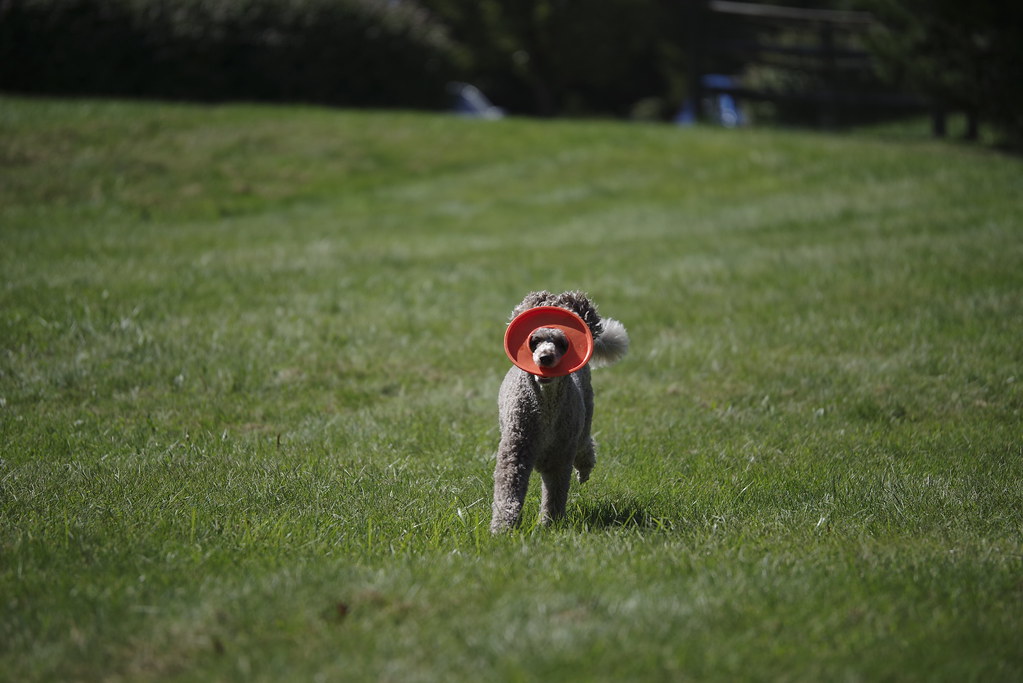
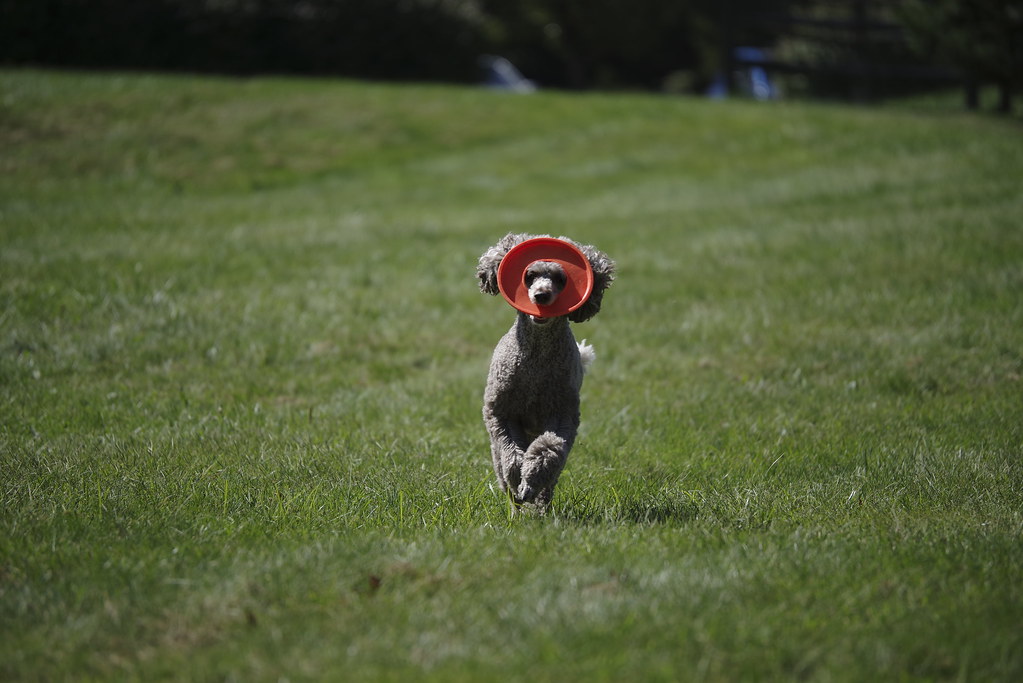
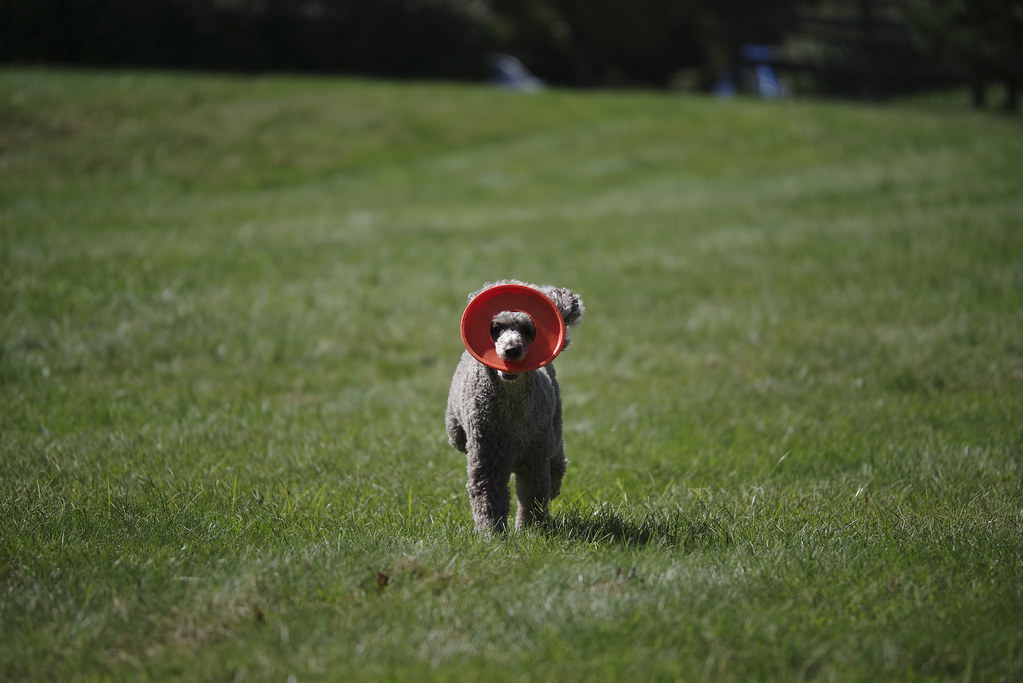
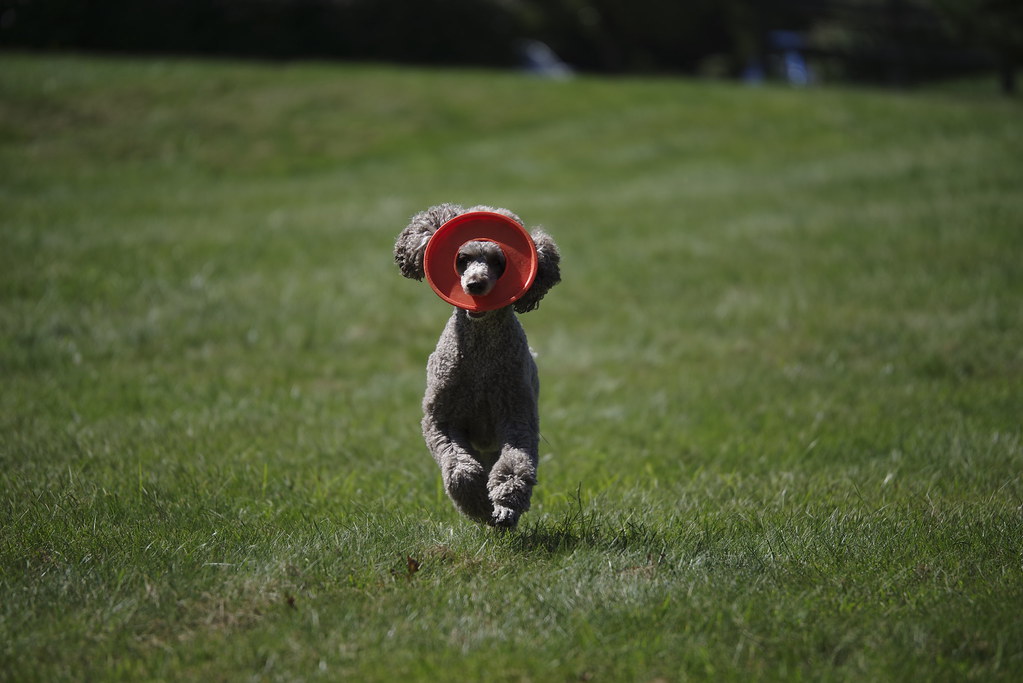
This time it was 7/ 15 of the pictures that were dead on target, and the other missed ones were really close! And with quite a few of the frames the target was far away, which shows that the Focus Ring throw range hypothesis, from above, is most likely not the culprit. If this is the better method for action shots, then it would be up to the photographer to decide if they want to abandon their 14 bit depth of field for 8 bits and have all their settings baked into their file.
I will try to head out again and get some more shots with the two different methods to see if there is truly something to these methods.
I am not willing to kill my dog for my hobby, so this takes time. :)
|
|
Forum: Pentax K-1 & K-1 II
09-20-2017, 06:48 AM
|
| |
Thank you for that information clackers. If you wouldn't mind sharing your autofocus settings, I would greatly appreciate it.
From this image:

I gathered the following information from this picture:
Focal Length: 140mm
F-Stop: 4.5
Runner Height: ~1.5m
Distance from runner: ~20m
With those settings I calculate your DOF to be 5.3m
What I am really curious about is this picture:

Do you have a sequence of these pictures? And do you have the RAW files available? I would love to be able to track the focus through a sequence of shots.
The other possibility that comes back at this stage, is the potential of the lens being a factor. I have the Pentax 70-200 and you are using the Tamron 70-200, which is something I mentioned before as not being able to rule out.
One more question, do you shoot RAW or JPEG? It just popped into my head that this might be some sort of contributor, if it is CPU ralated.
Thank you clackers, I hope you don't mind sharing your setup. It might help me figure out how to improve my setup.
|
|
Forum: Pentax K-1 & K-1 II
09-19-2017, 11:03 PM
|
| |
Thank you, clackers.
I am excited to see these pictures. I noticed that you had a massive DOF.
Just a guess, but I would say the F-stop is between 7.1 to 9.
I have researched some pictures of birds in flight, last night, and focused quite a bit on those flying towards the camera, or away from the camera. One thing I noticed is that the pentax cameras consistently had to have a significantly higher F-Stop values.
I also located this research by DPReview: Special K? Pentax K-1 Review: Digital Photography Review
I have been able to locate more information on what the problem is. The issue is the lag time between autofocus acquisition and shutter release. This link has actual measurements of the problem: Pentax K-1 Review - Performance
Here are some sample pictures of 2008 cameras shooting at low F-Stops, being able to achieve this:
flight | The Cattle Egret for me are te fastest flyers.They ? | Flickr
Owl in flight | While visiting a bird show, this owl came fl? | Flickr
And here are some pentax equivalent pictures:
Flight | Phil Morgan | Flickr
_IMG7380. 300 mm. 1-1000 sec at f - 8,0. ISO 100. 0 EV | Flickr
One great shot I found of a K-1 was this one: The bird was about to land, so very little forward speed. By my calculations the bird was between 20 and 25 meters away and the DOF was about 1.1 meters. I wonder if there was a nest below the bird and he just setup the focus before hand (which is one of my ideas as a work around).
Undercarriage Down! | Peter Wood | Flickr
I agree, you can get magnificent shots with a large DOF. And it is an effective way to overcome this flaw. I was hoping to get some nice action shots with some great separation between the subject and background.
For those hoping to take shots of someone walking towards them, with low F-Stop values, they will be quite frustrated. I am sure it is a rare scenario and you can always just start pushing the F-stop value higher until you get what you want. But it is helpful to know why you need to do so.
I am still happy with my K-1, but I wish it didn't have this limitation.
For bird pictures, on a bright day, there really is no difference, since the distance between the background and the subject would yield similar results with the higher F-stop values. But it does eat away from the available shutter speed and ISO combinations, you could have had.
Thank you everyone, for your input. I didn't know what the problem was at first, since it manifested it self in some very strange ways. I can now live with it, now that I know what the issue is. I think I have a few workarounds for different situations.
|











